BIO 209L, W.1 08/21/25 (R) Quiz, Sections & Body Cavities
1/66
Name | Mastery | Learn | Test | Matching | Spaced |
|---|
No study sessions yet.
67 Terms
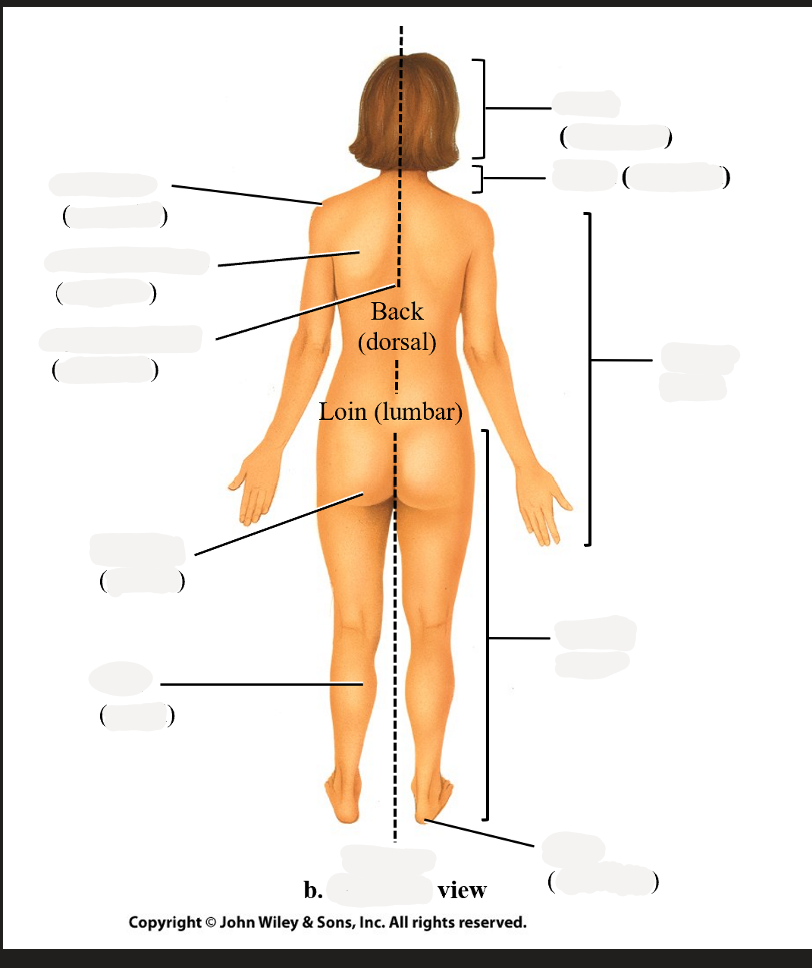
lateral
away from midline
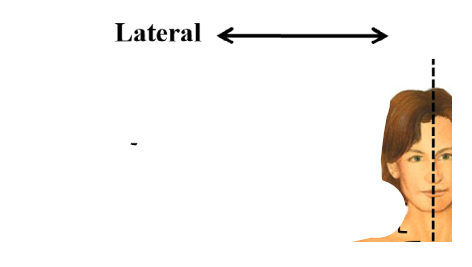
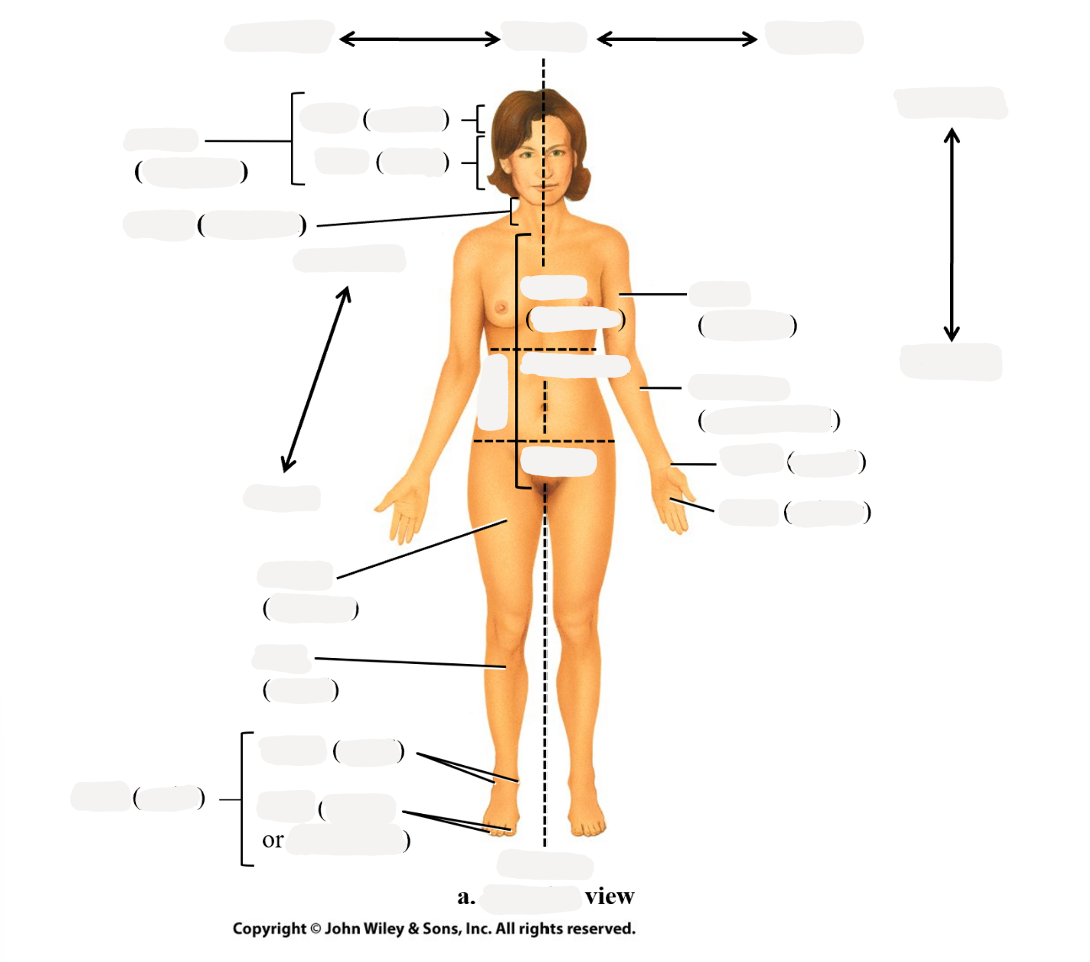
midline
middle of body
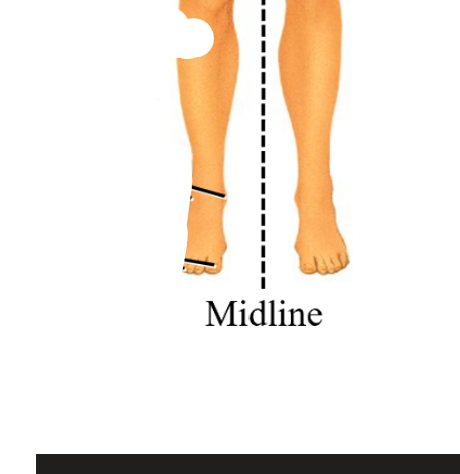
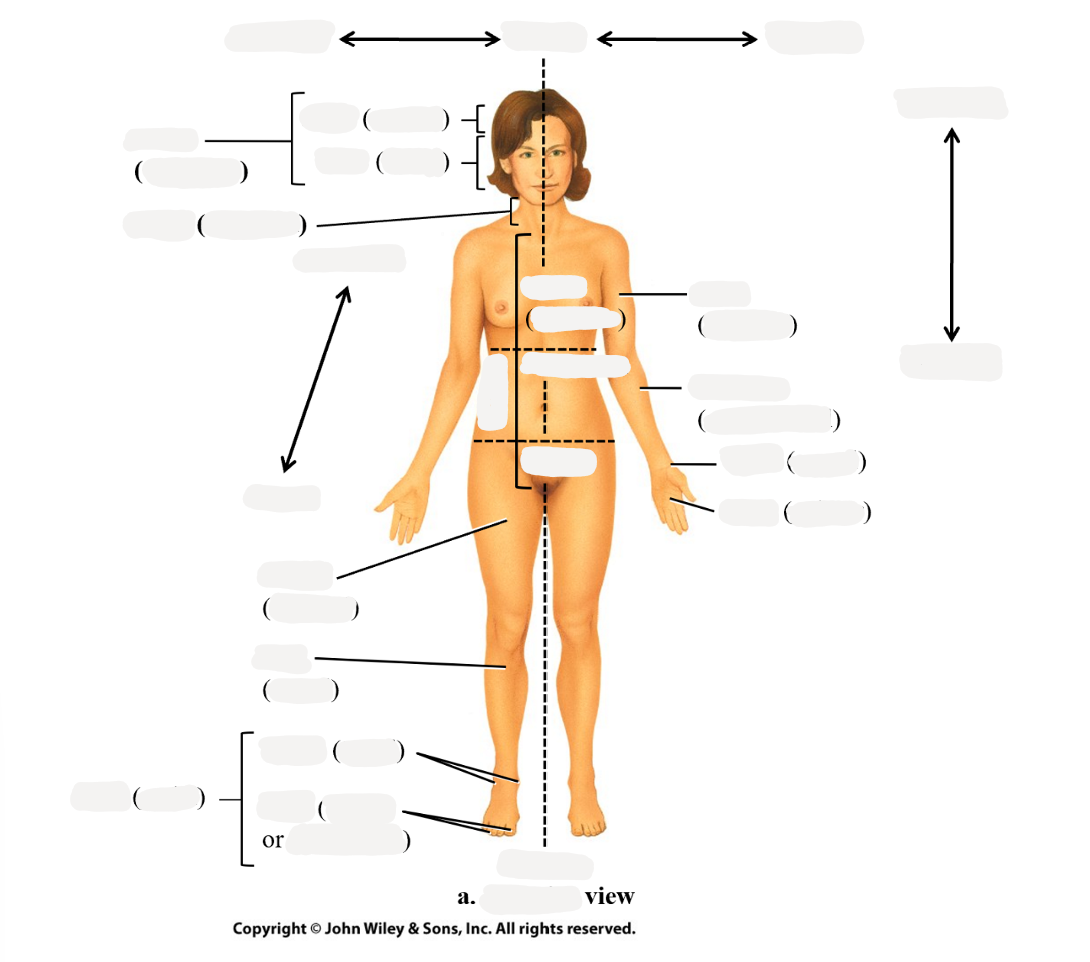
anterior view
front view

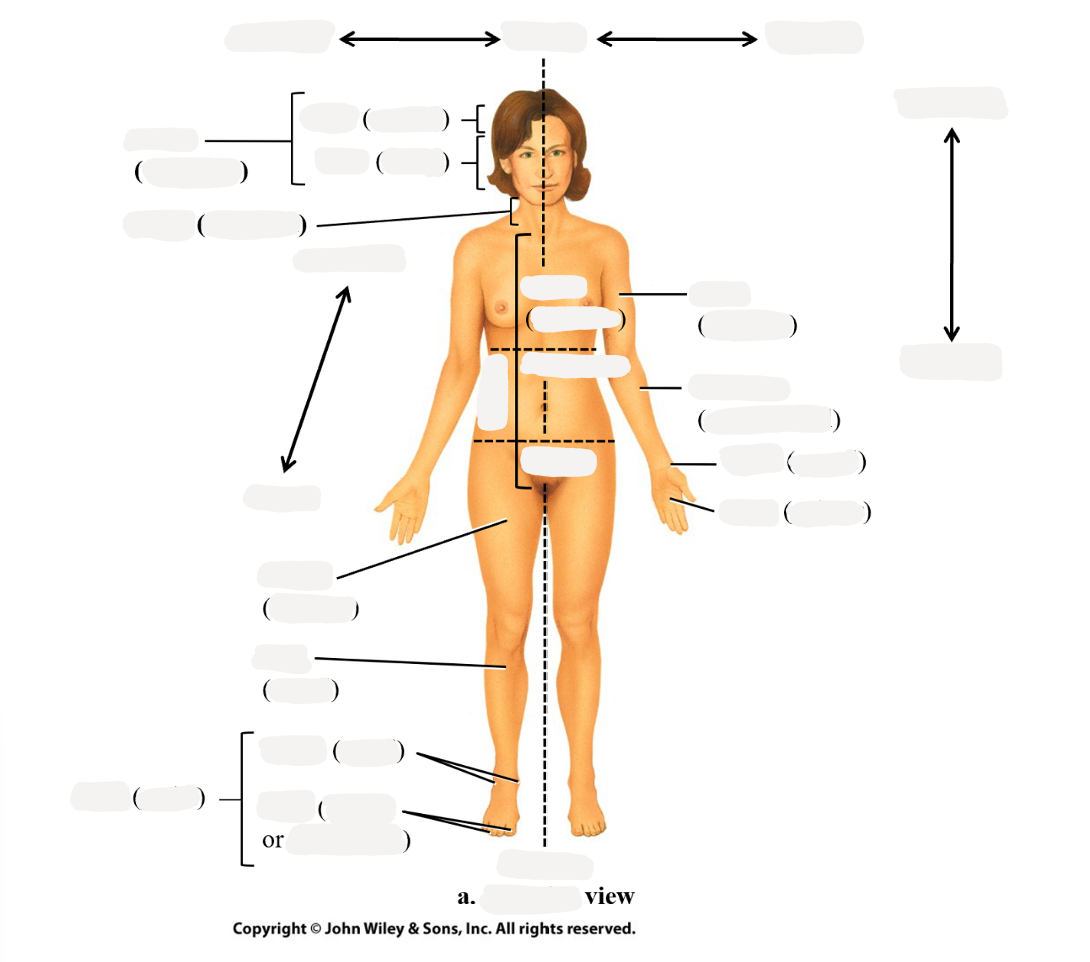
superior
above

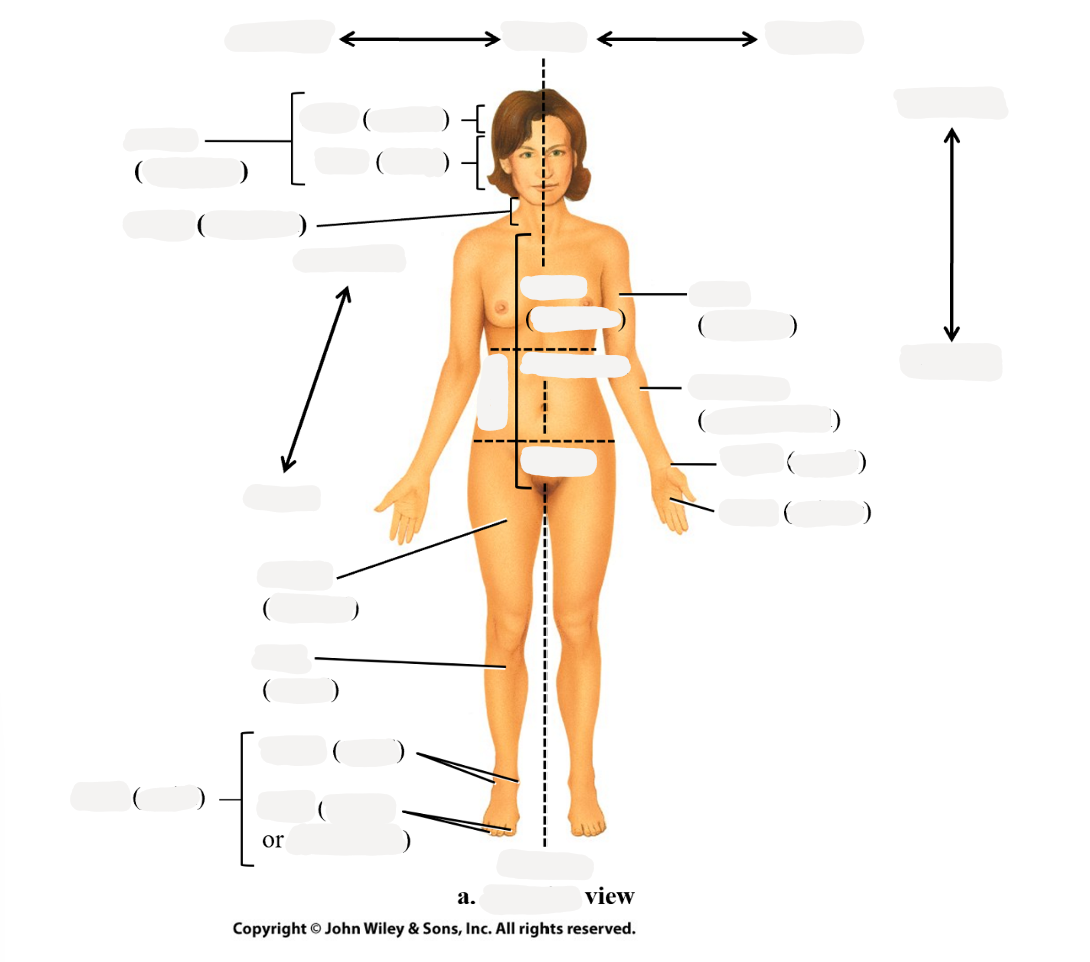
inferior
below
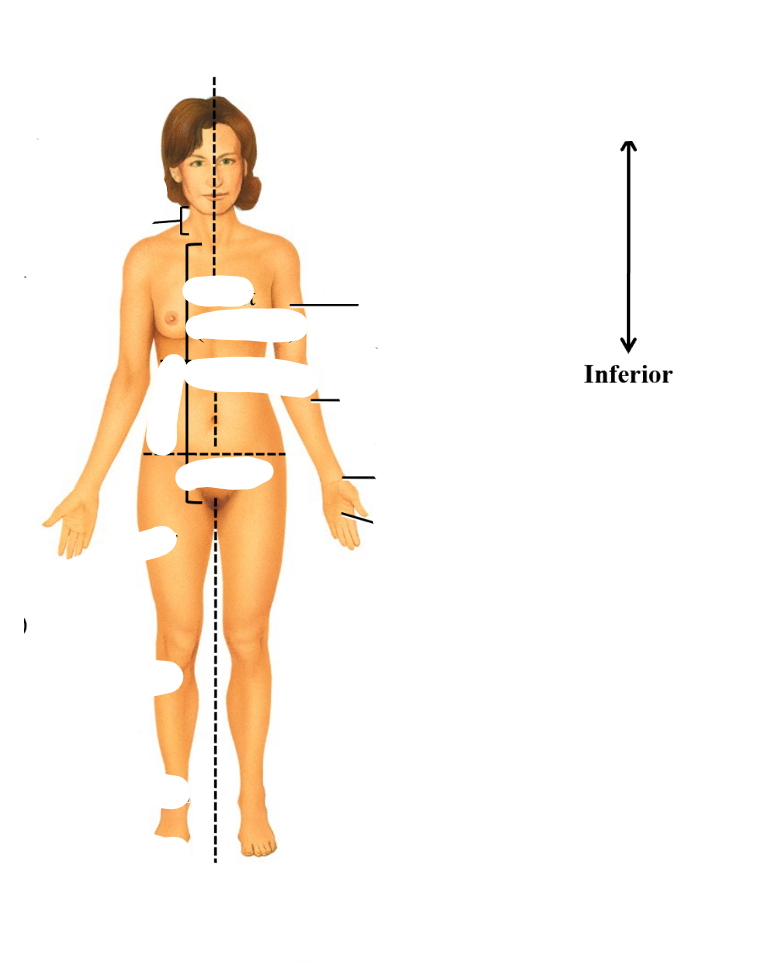
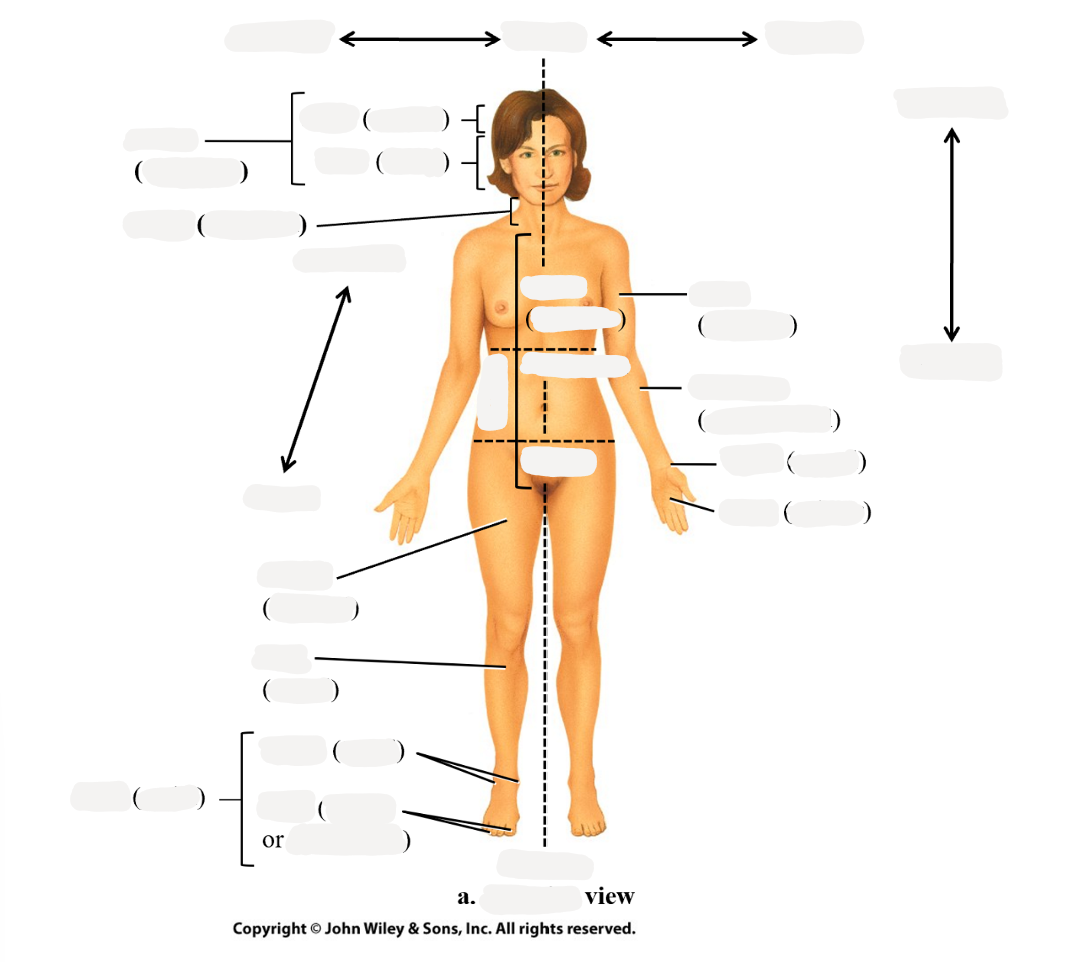
proximal
closer to the body
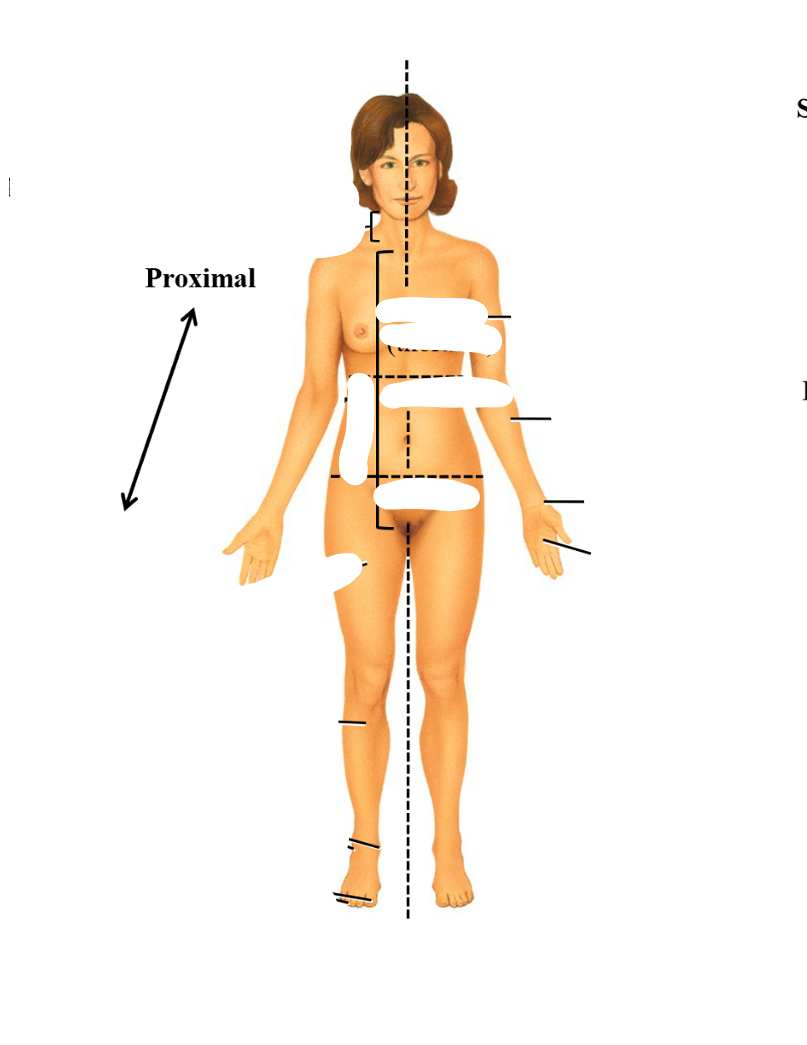
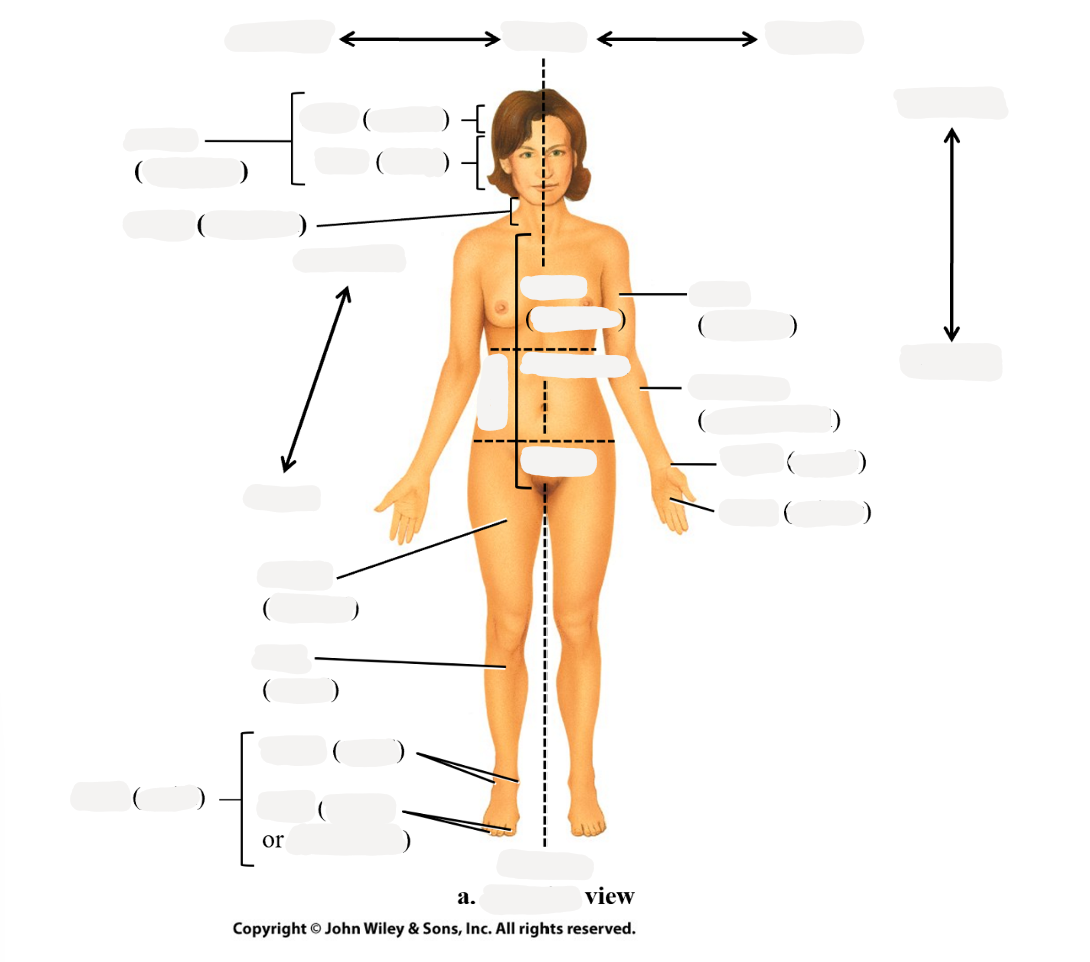
distal
distance further away from body
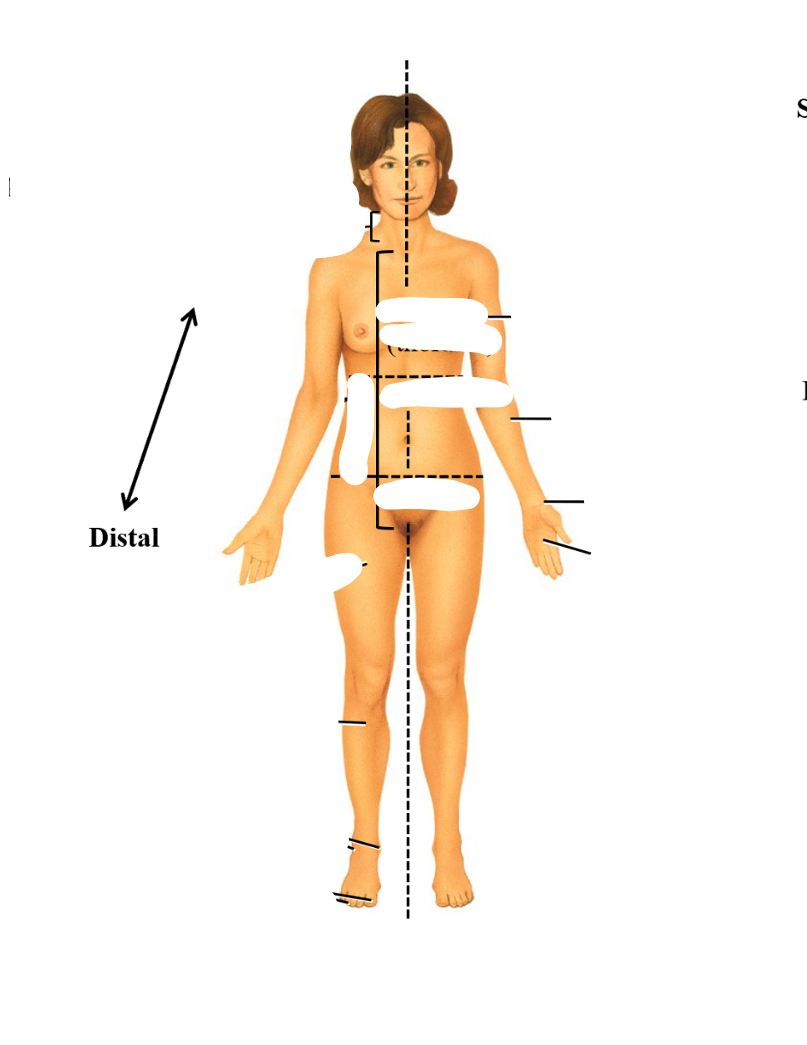
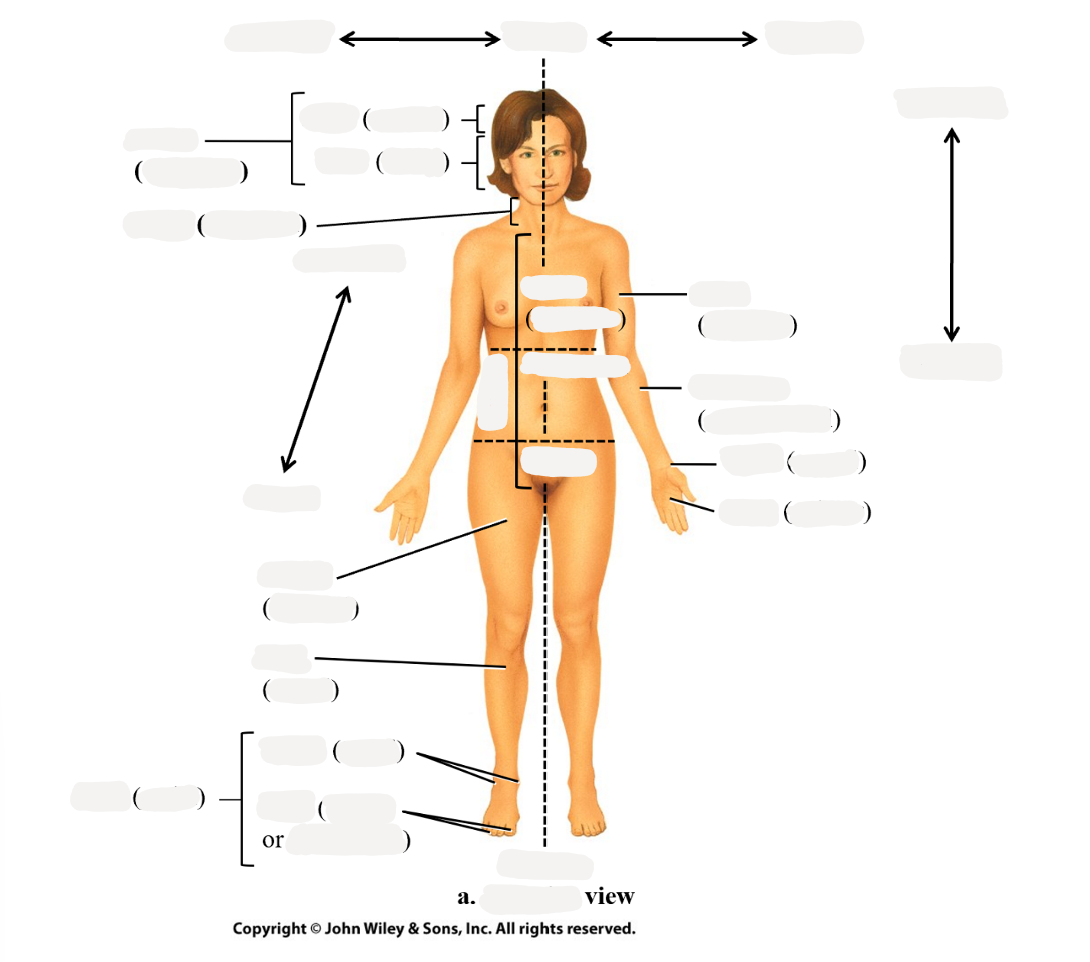
head
cephalic
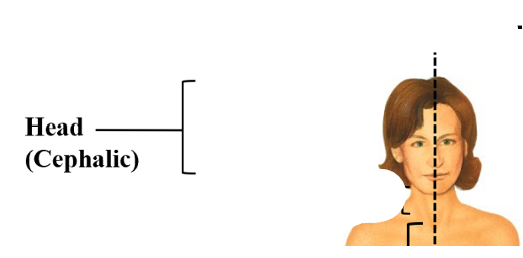

skull
cranial
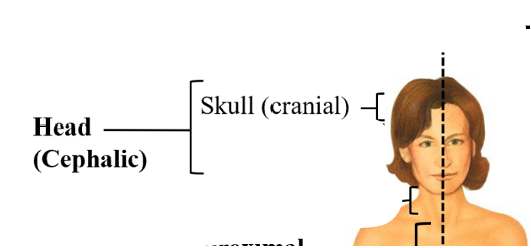
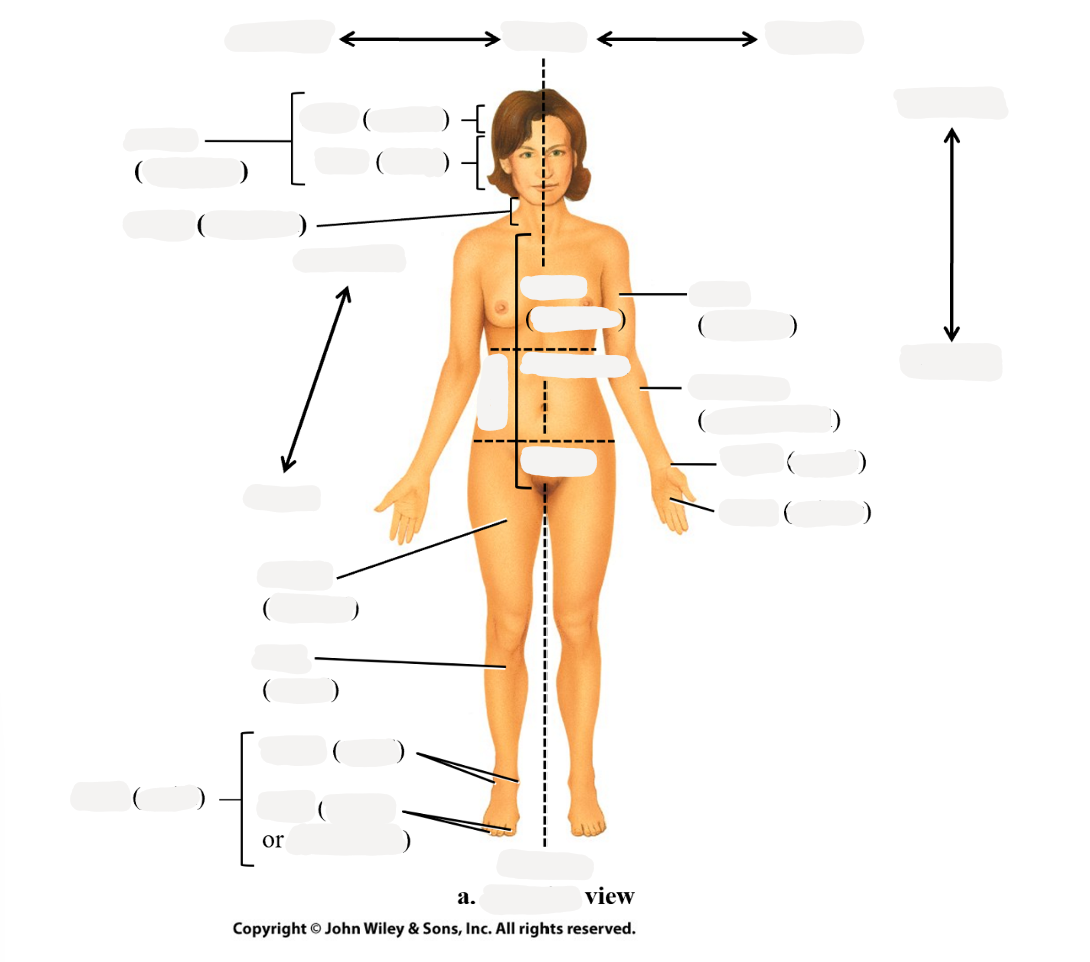
face
facial

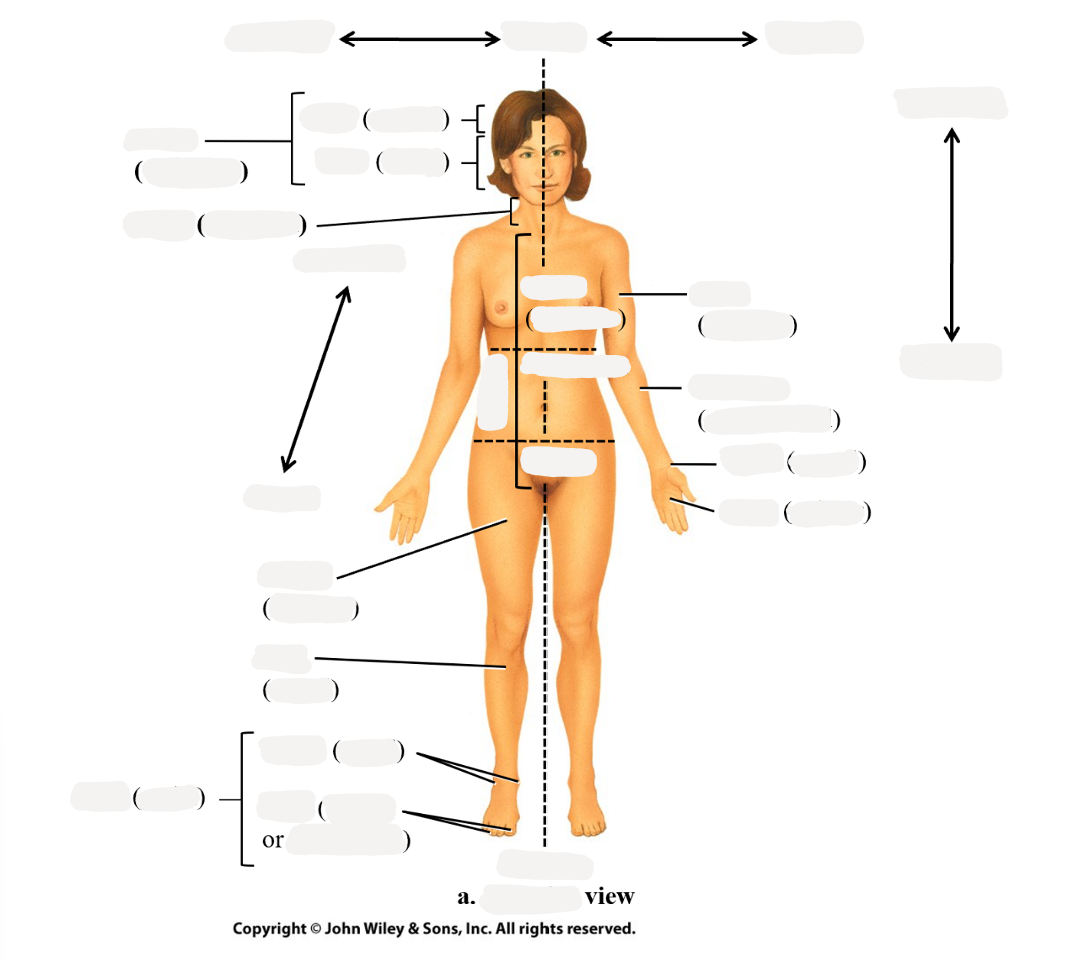
what 2 regions are within the cephalic region?
within the head region,
skull (cranial)
face (facial)
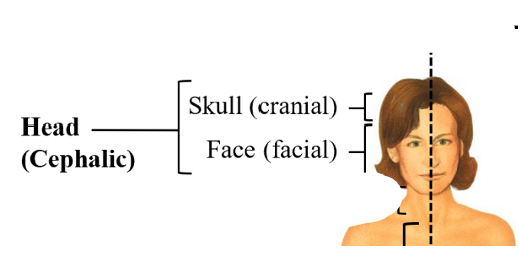
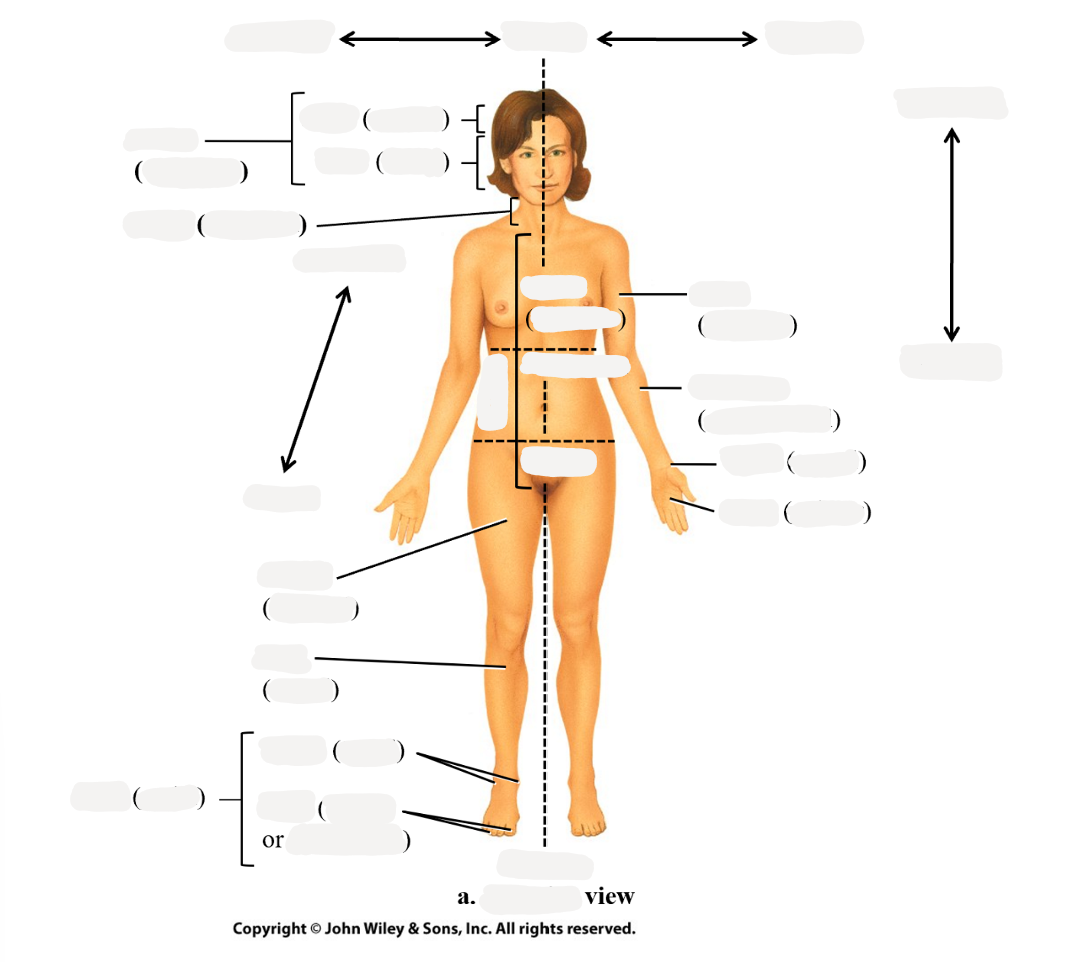
neck
cervical
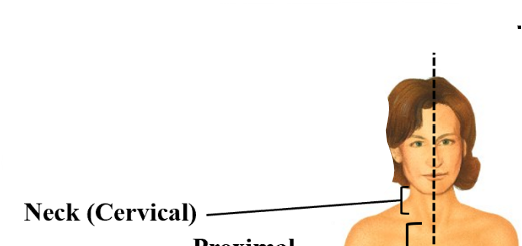
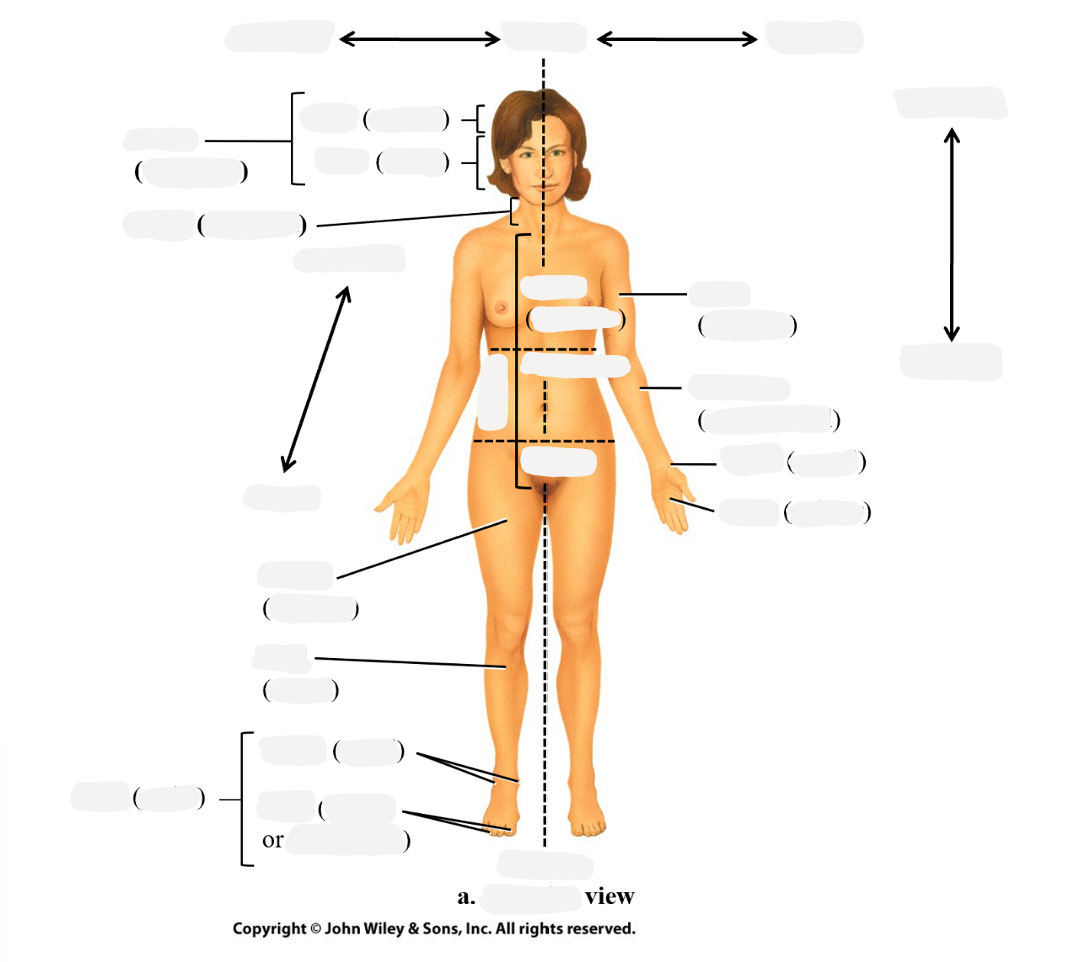
arm
brachial
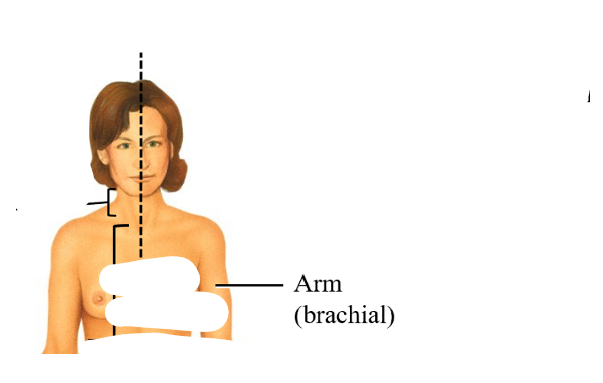
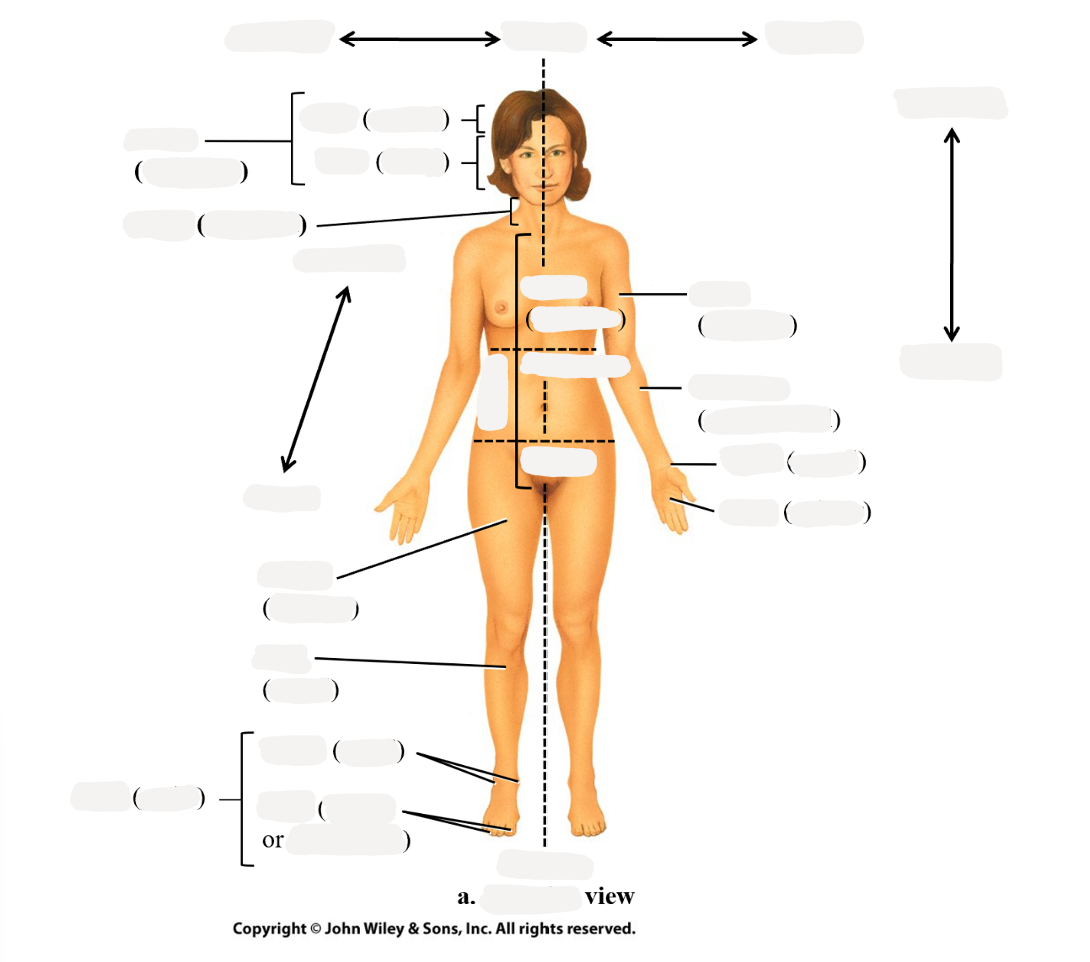
forearm
antebrachial
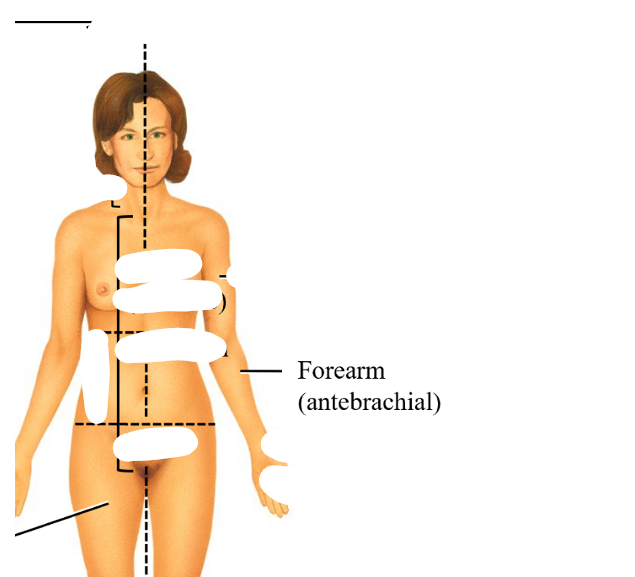
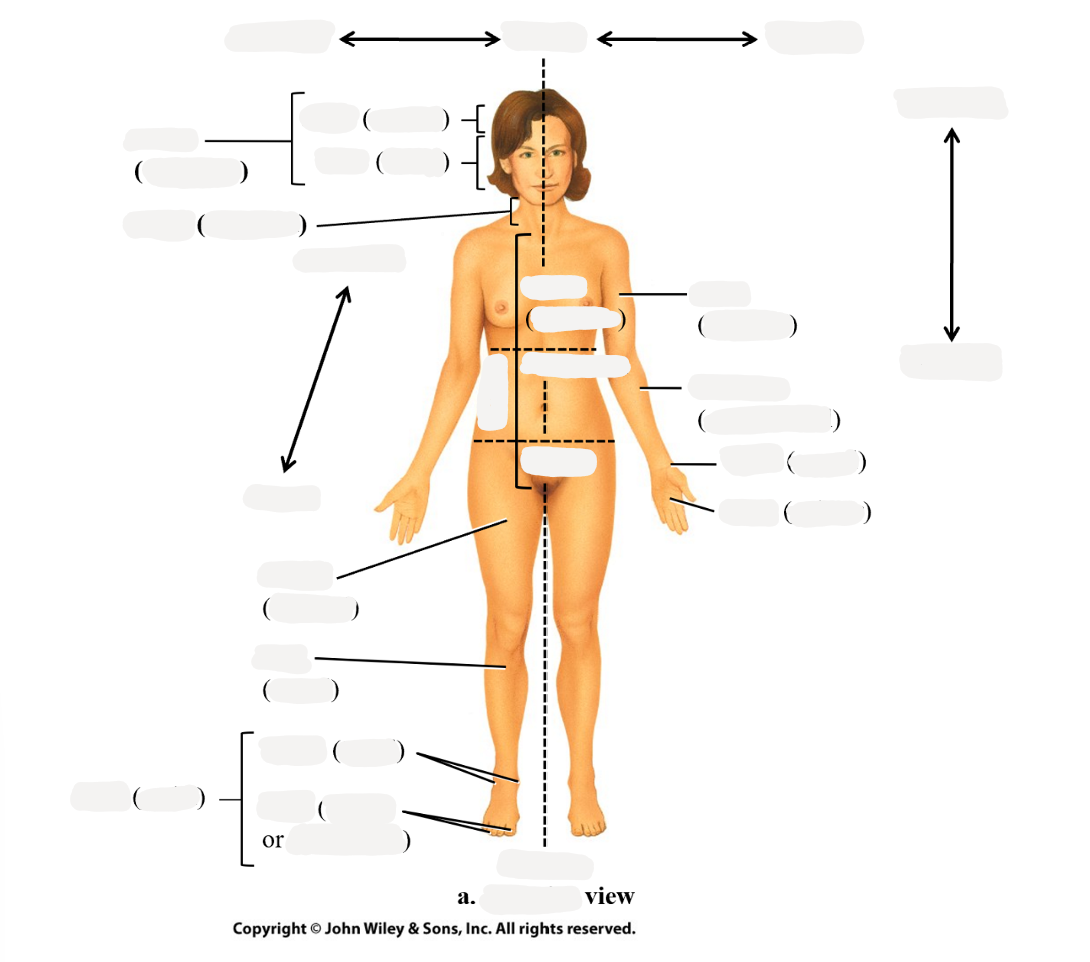
wrist
carpal
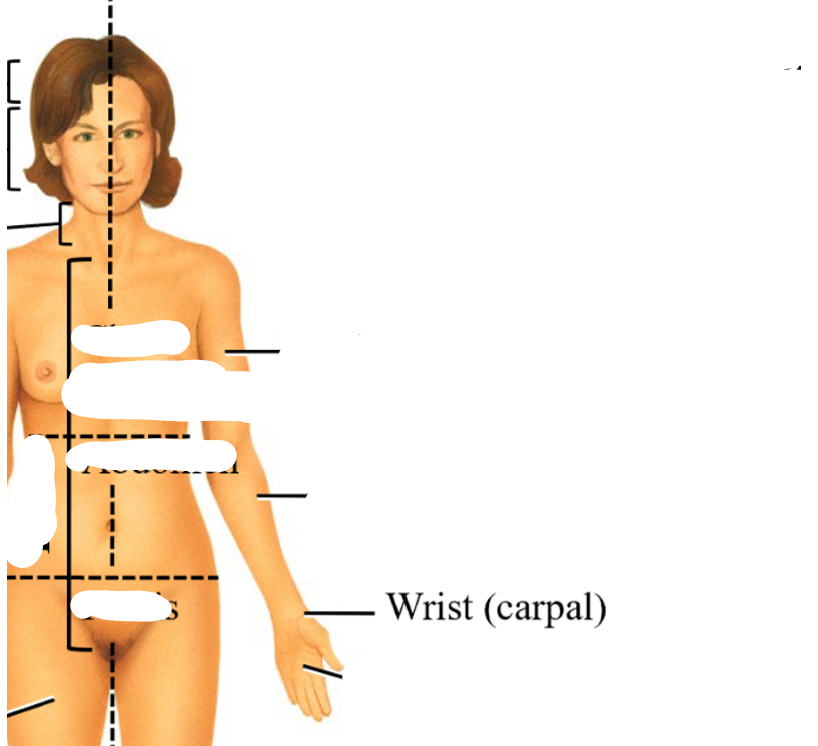
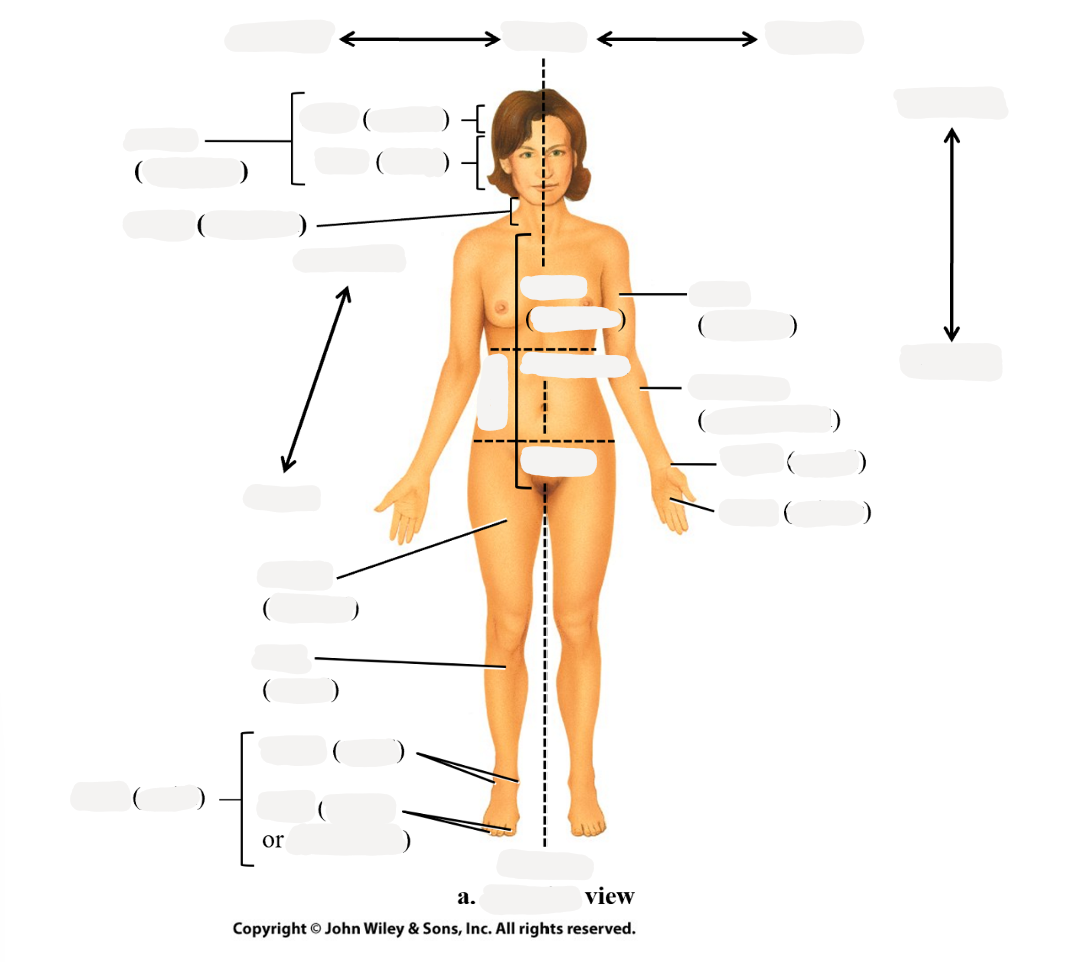
palm
palmar: always upward, the anatomical position, don’t want hands crossing
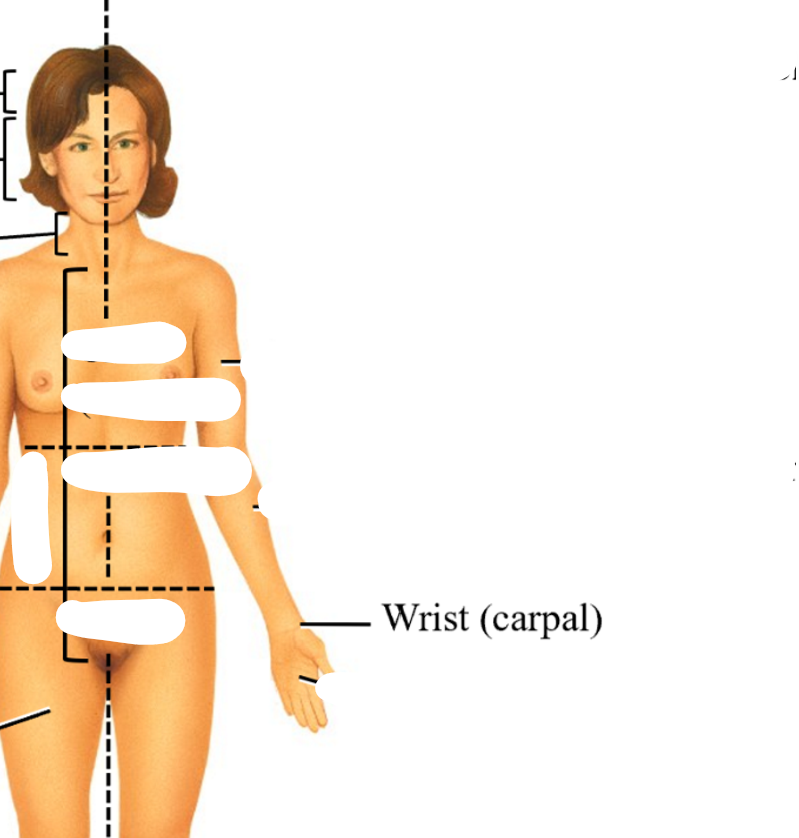
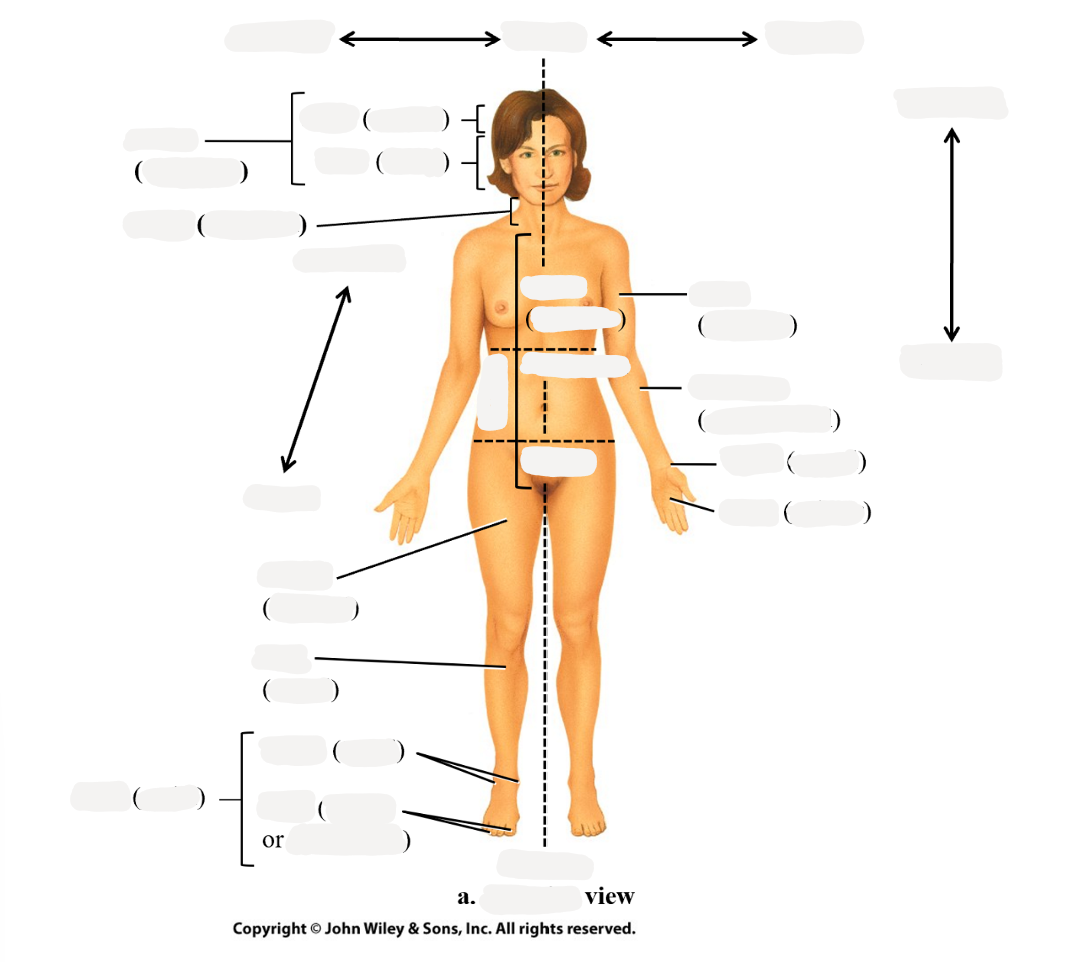
what 4 regions are within the arm**this includes the arm?
arm (branchial)
forearm (antebrachial)
wrist (carpal)
palm (palmar)
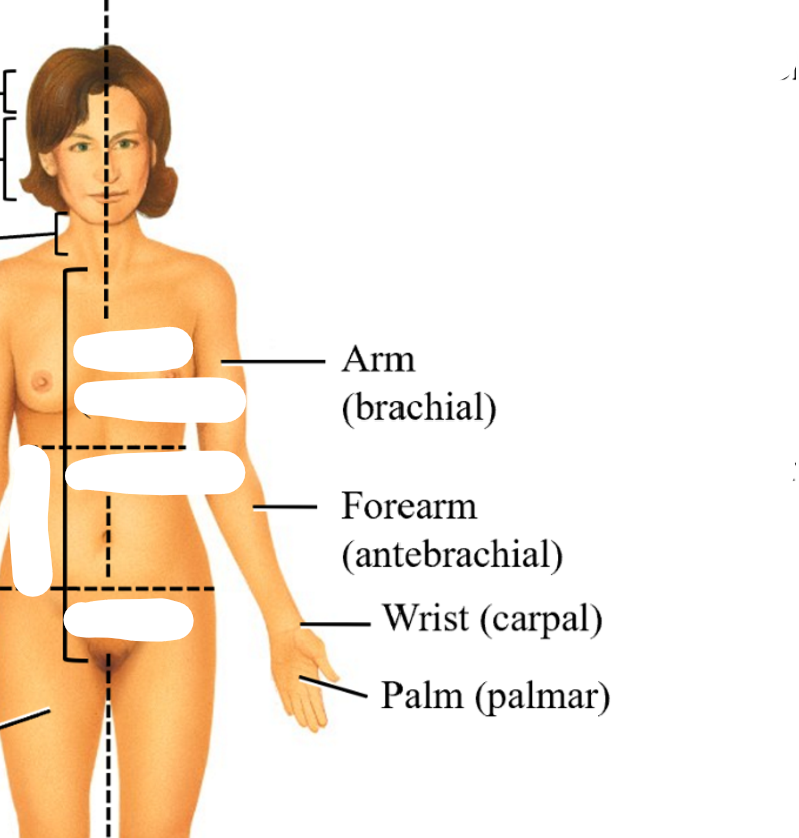

chest
thoracic

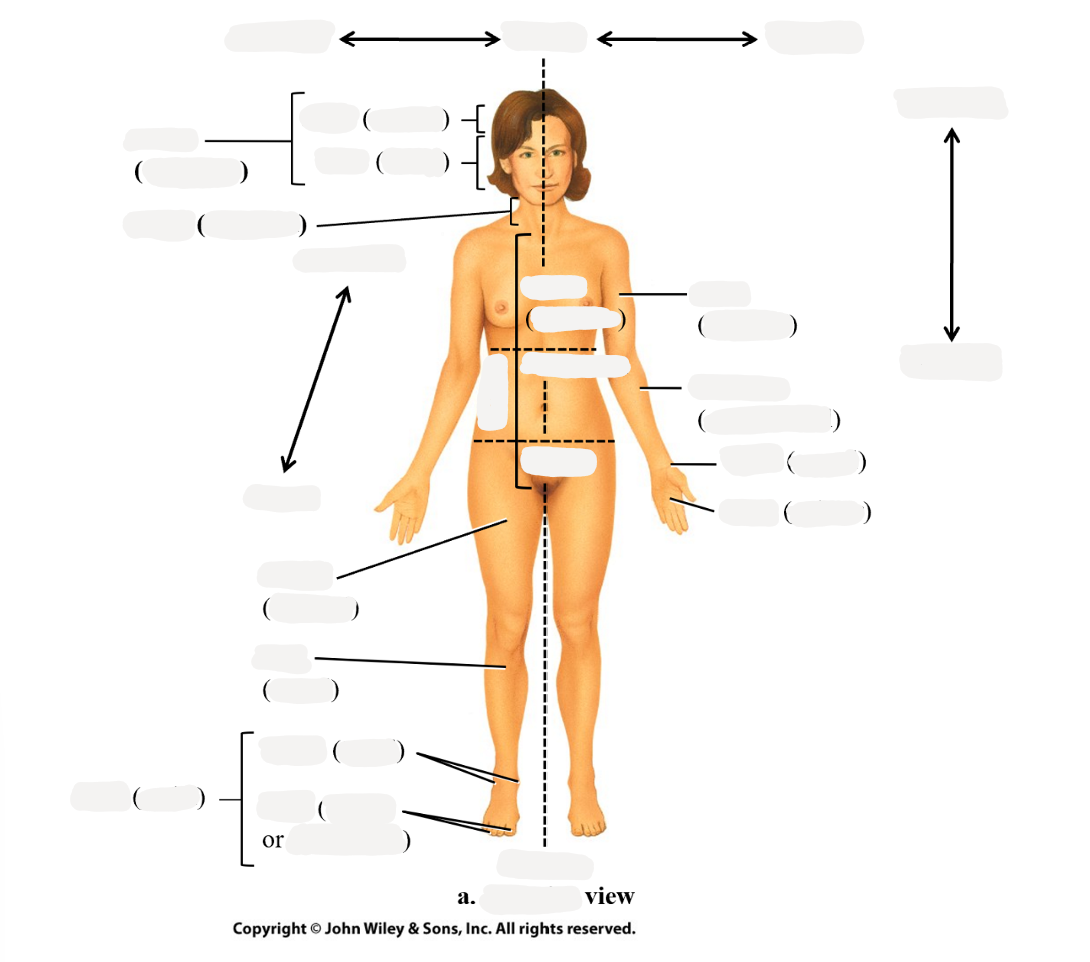
What 3 regions are located in the trunk region?
chest (thoracic)
abdomen
pelvis


thigh
femoral
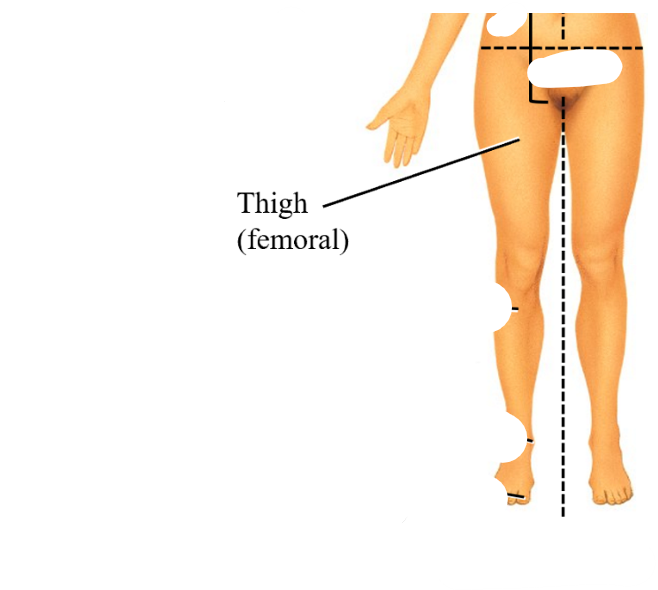
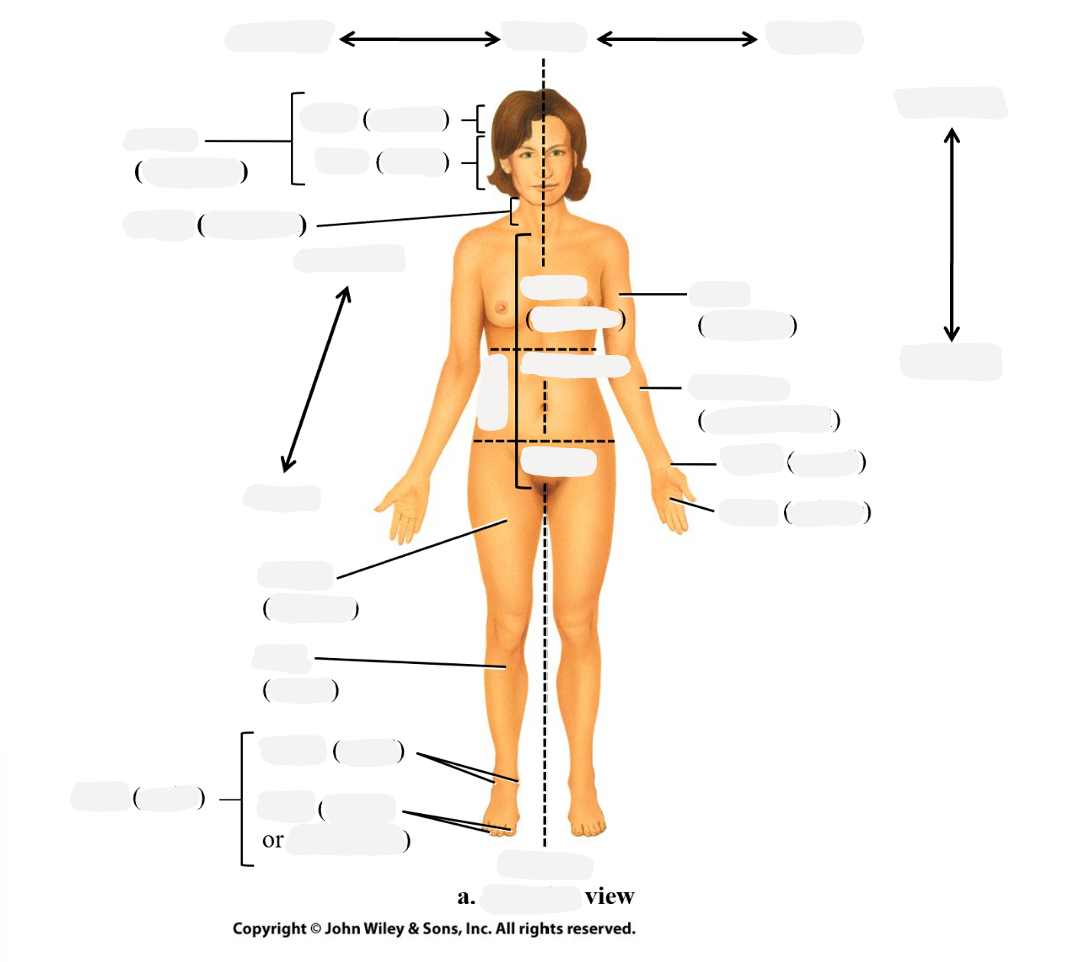
leg
crural
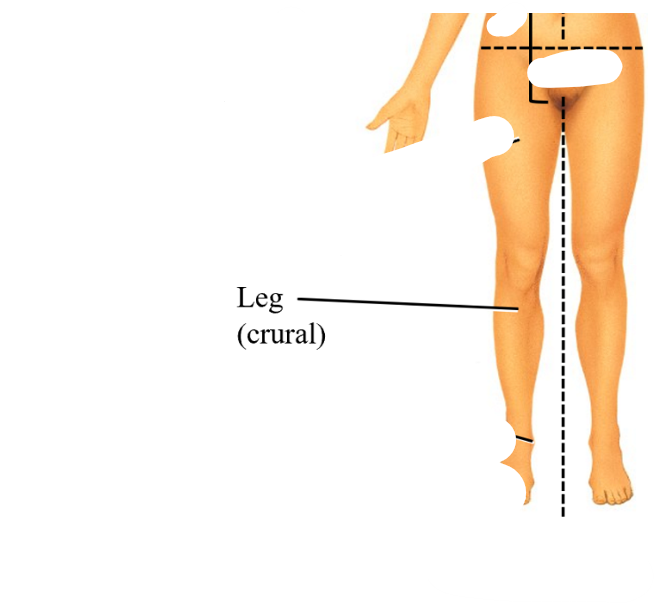
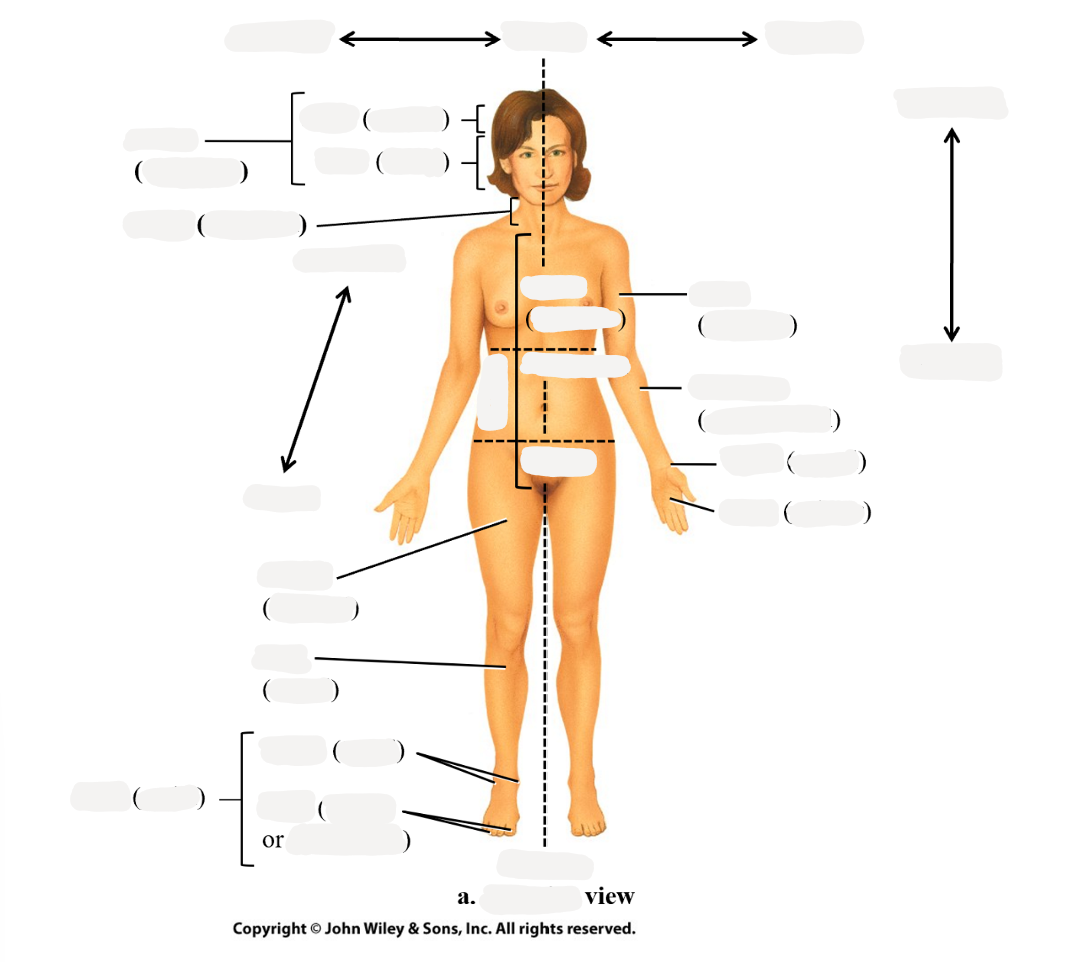
ankle
tarsal
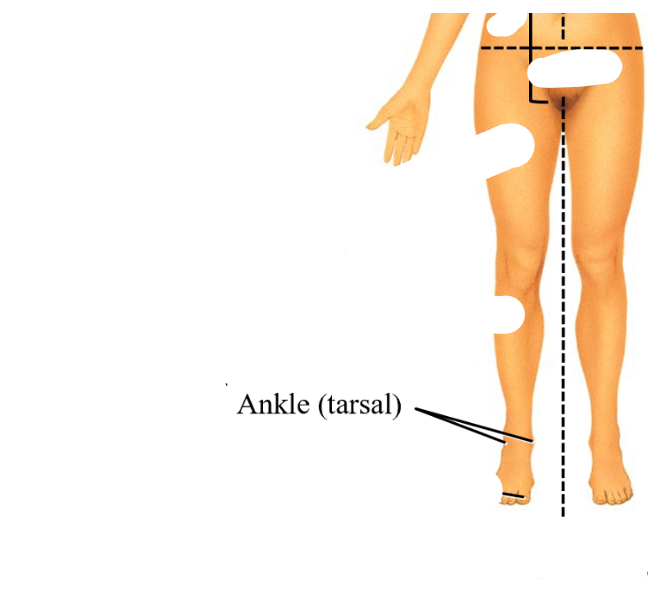
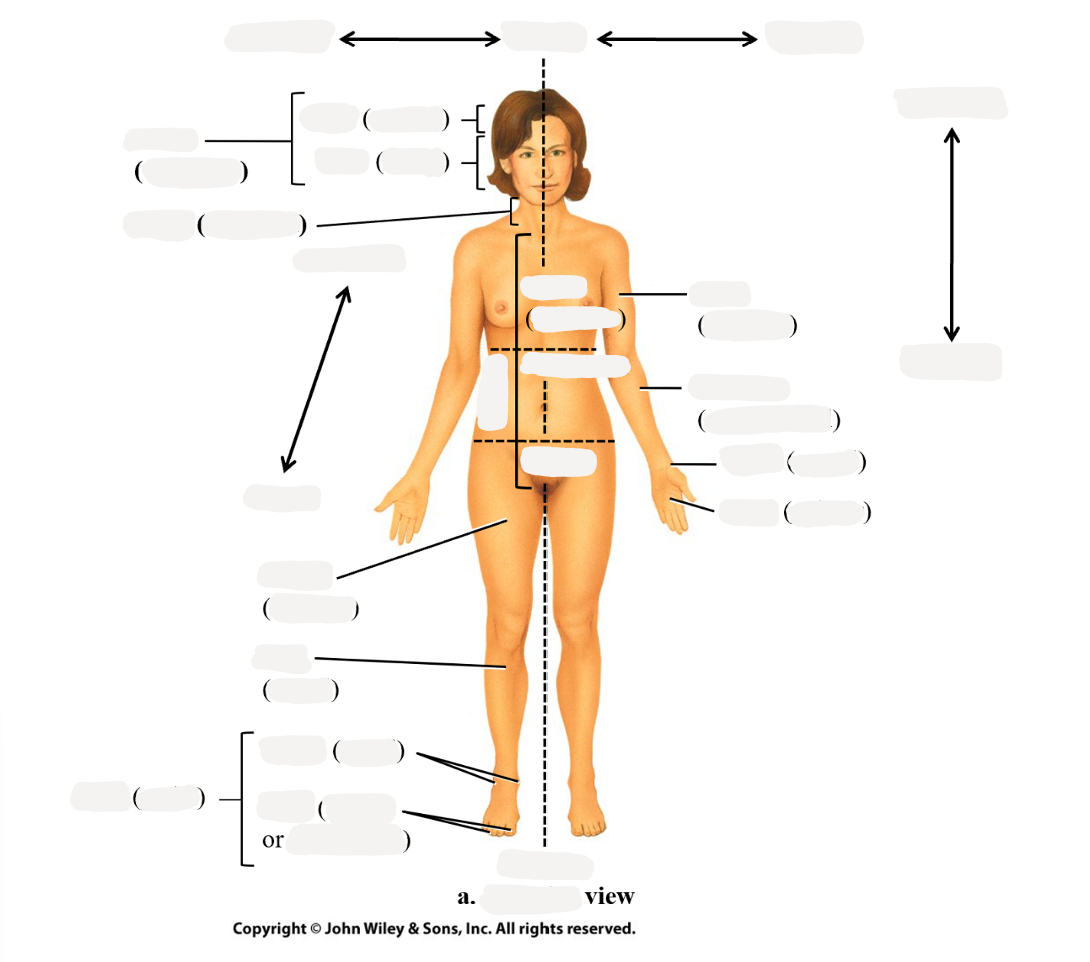
toes
digital or phalangeal
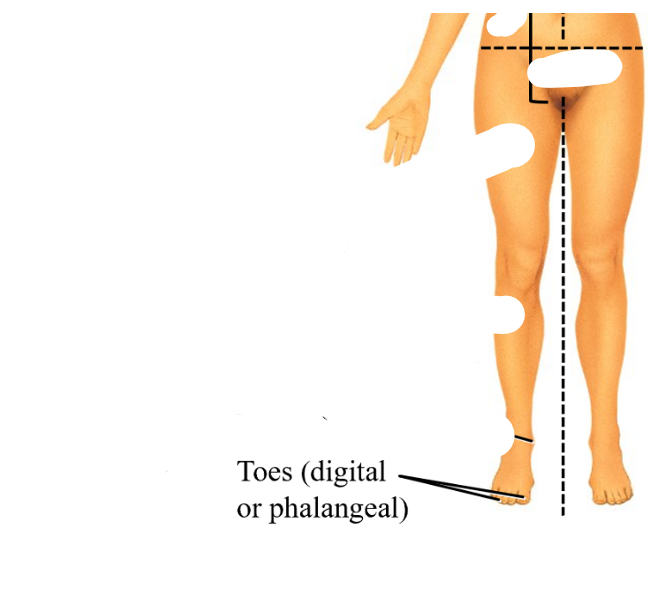
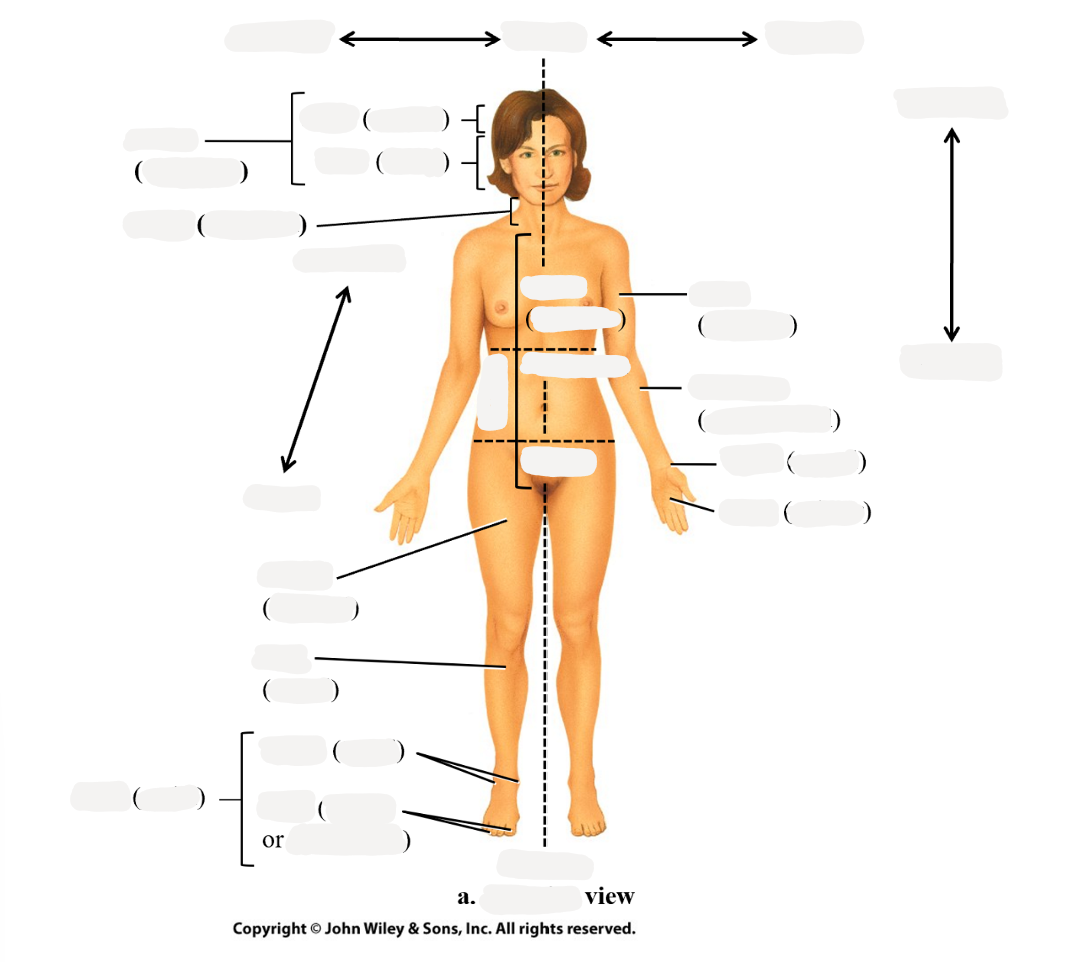
foot
pedal


what 2 regions are located in the pedal region?
in the foot region,
ankle (tarsal)
toes (digital or phalangeal)

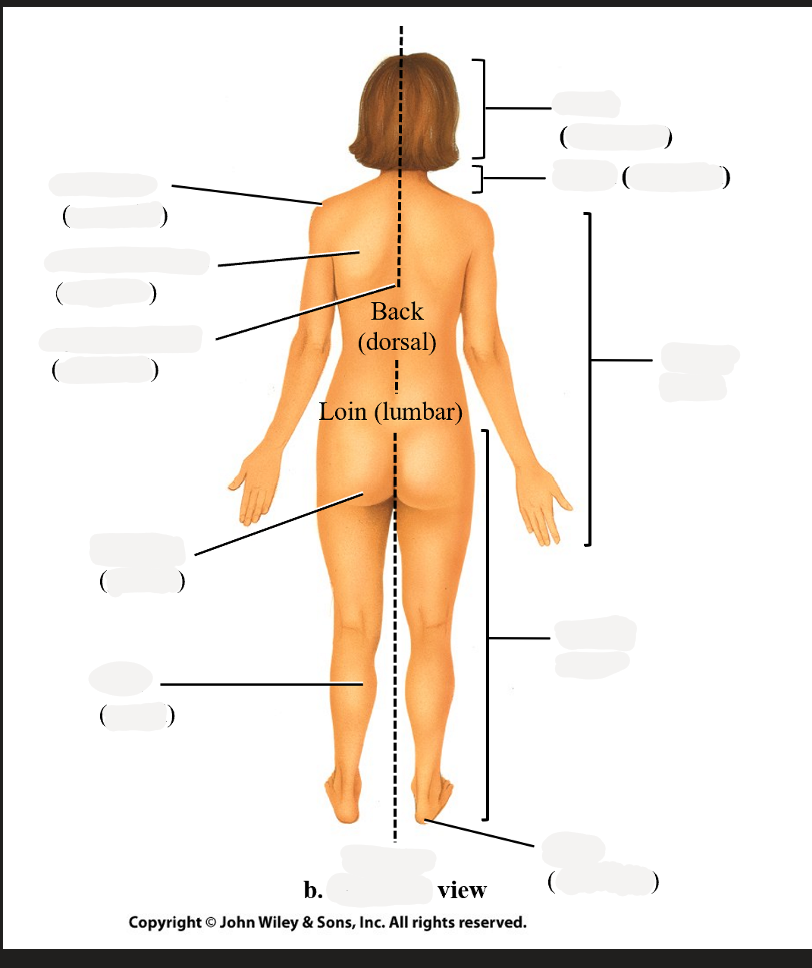
shoulder
acromial
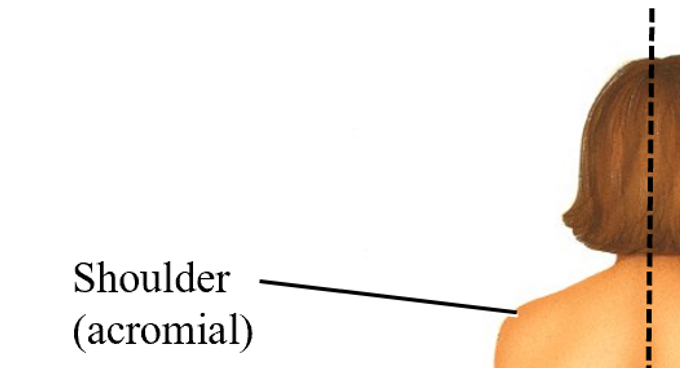
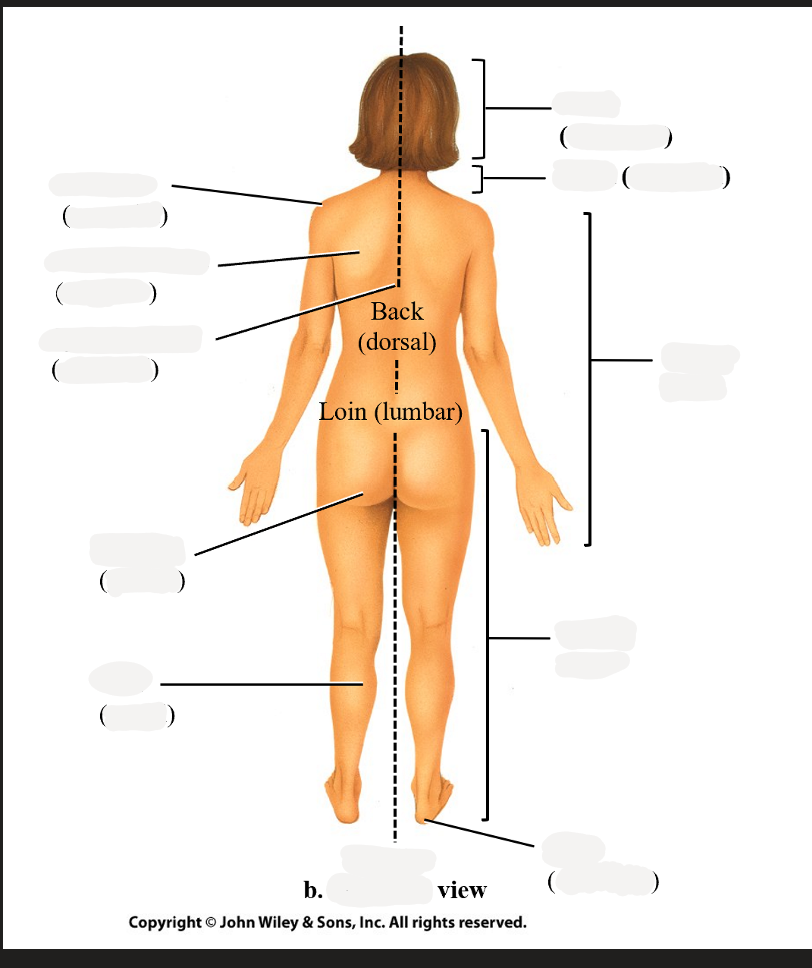
shoulder blade
scapular

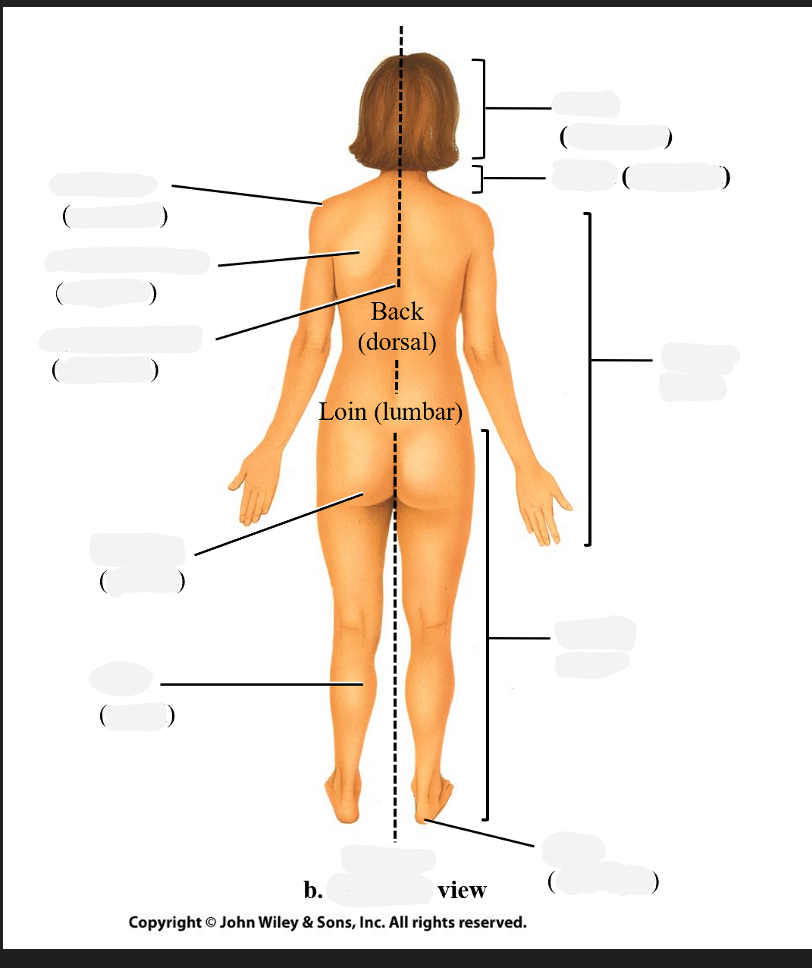
spinal column
vertebral
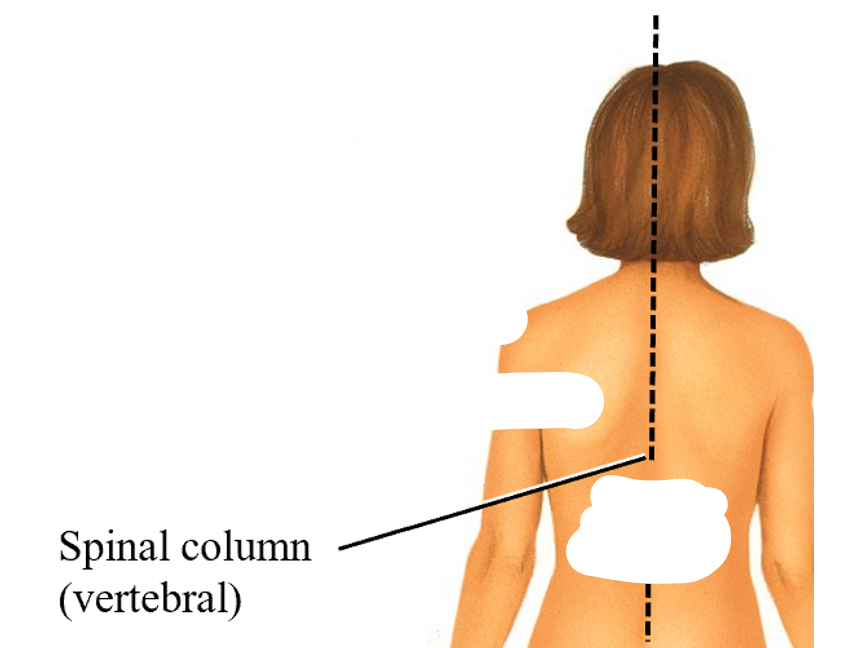
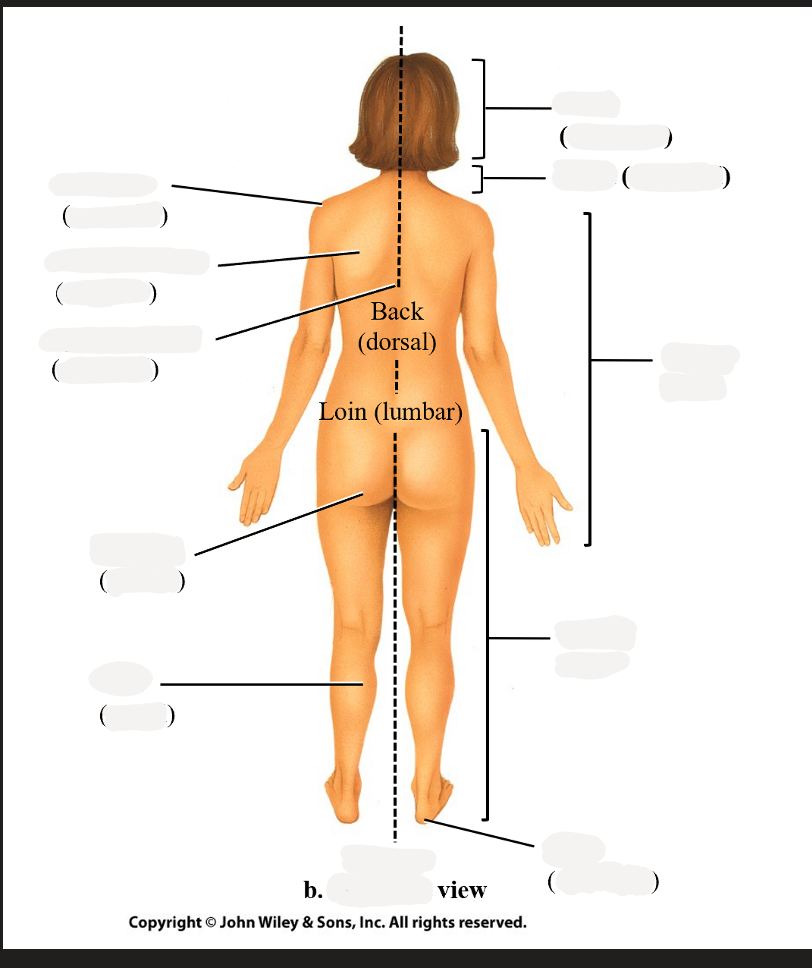
back
dorsal
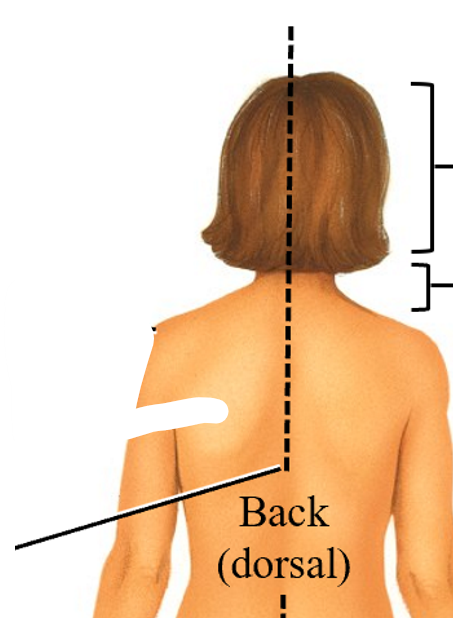
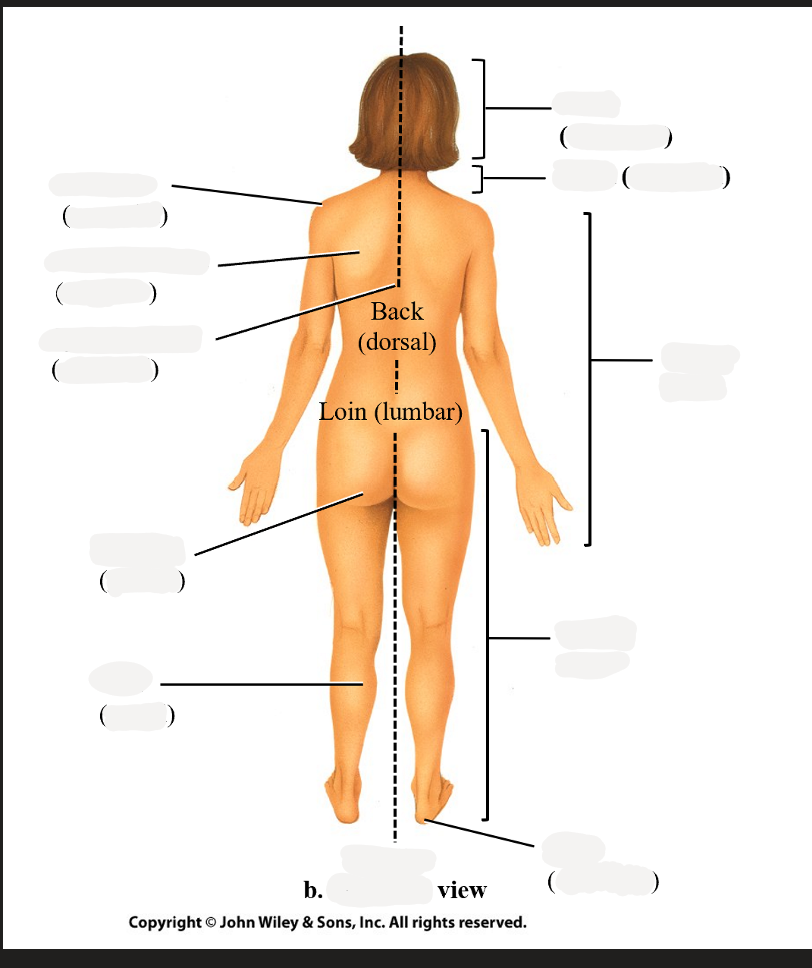
loin
lumbar
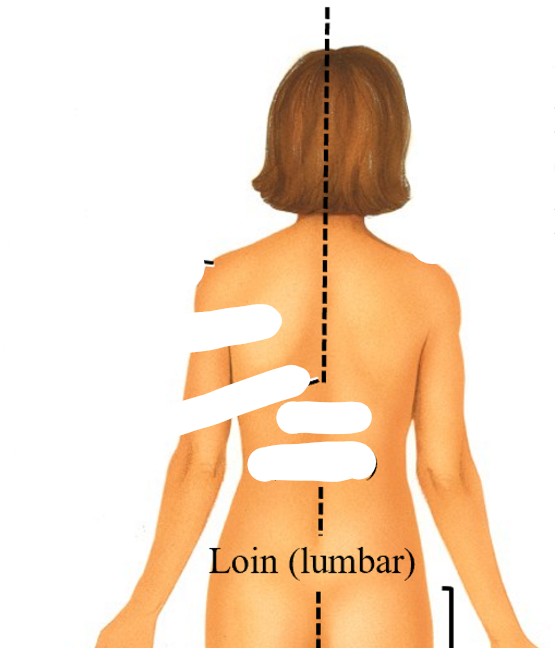
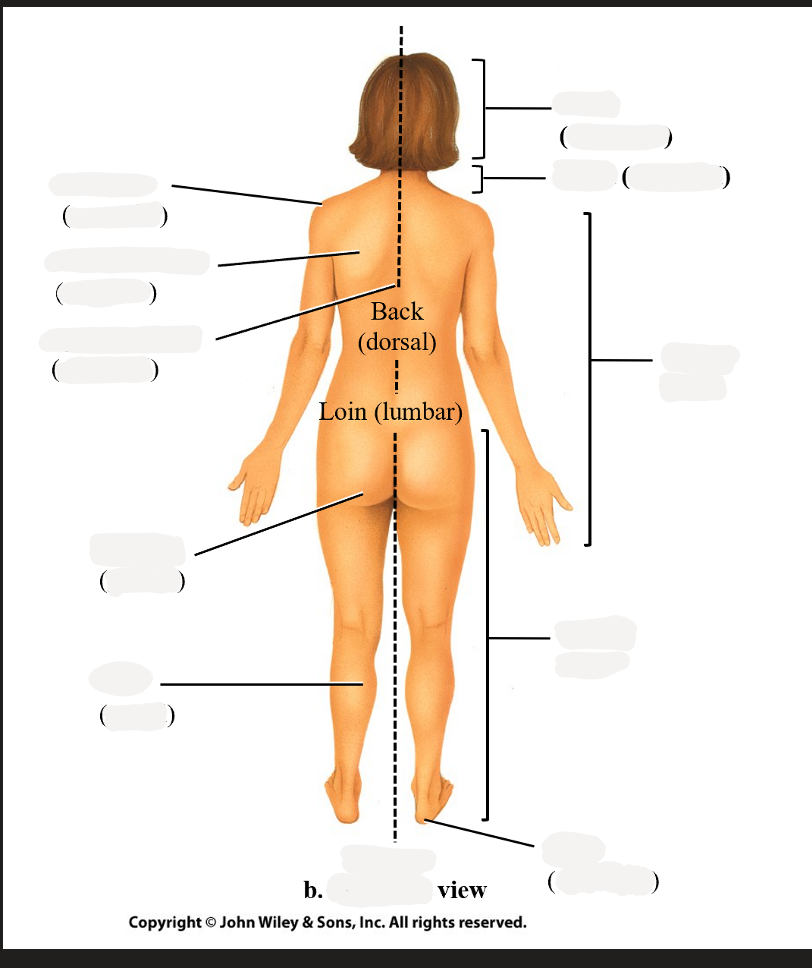
buttock
gluteal

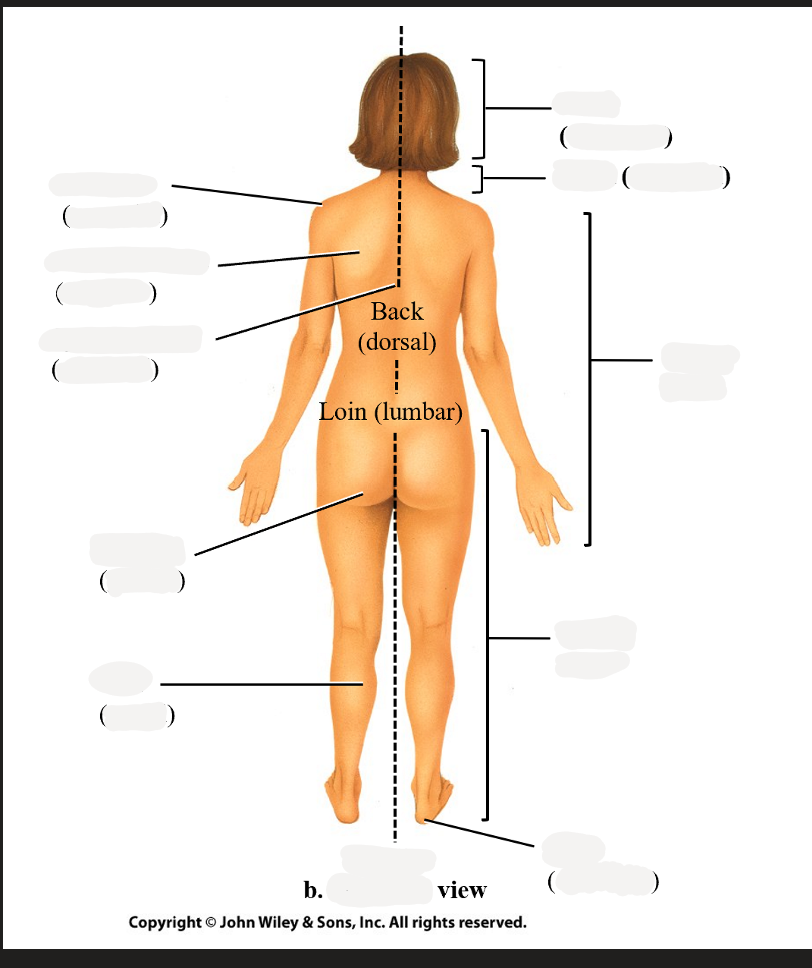
what 5 regions are included in the upper limb?
shoulder (acromial)
shoulder blade (scapular)
spinal column (vertebral)
back (dorsal)
loin (lumbar)
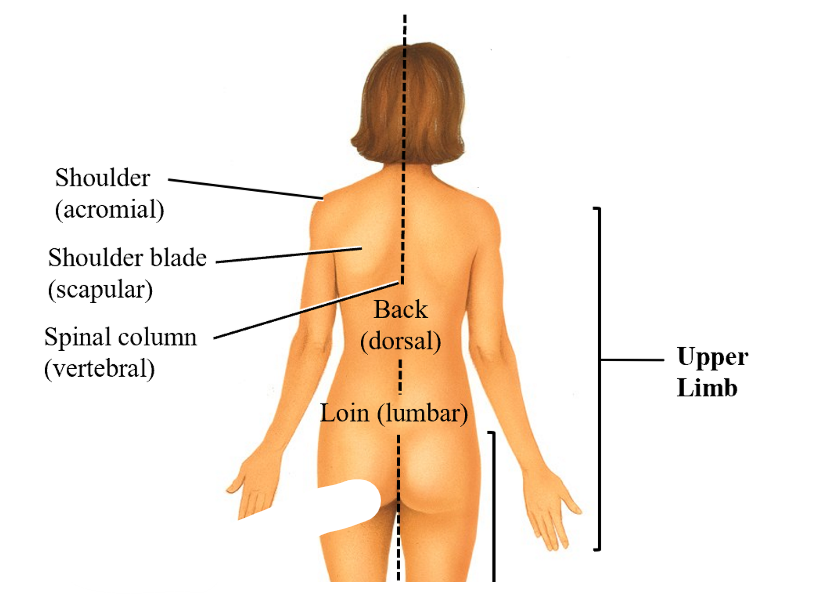
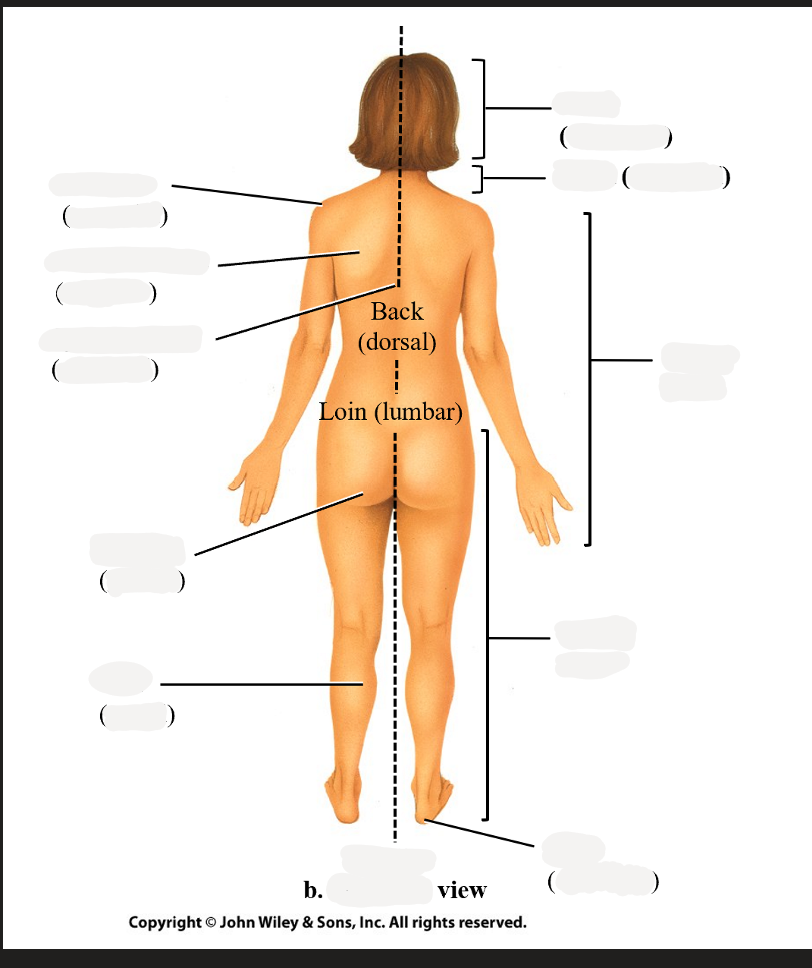
heel
calcaneal
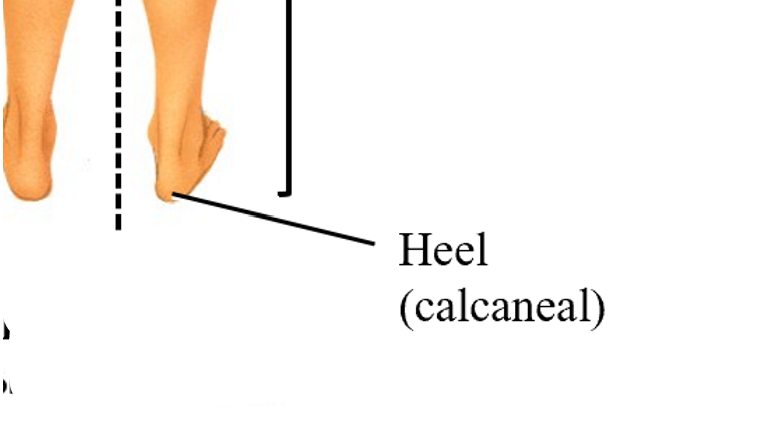
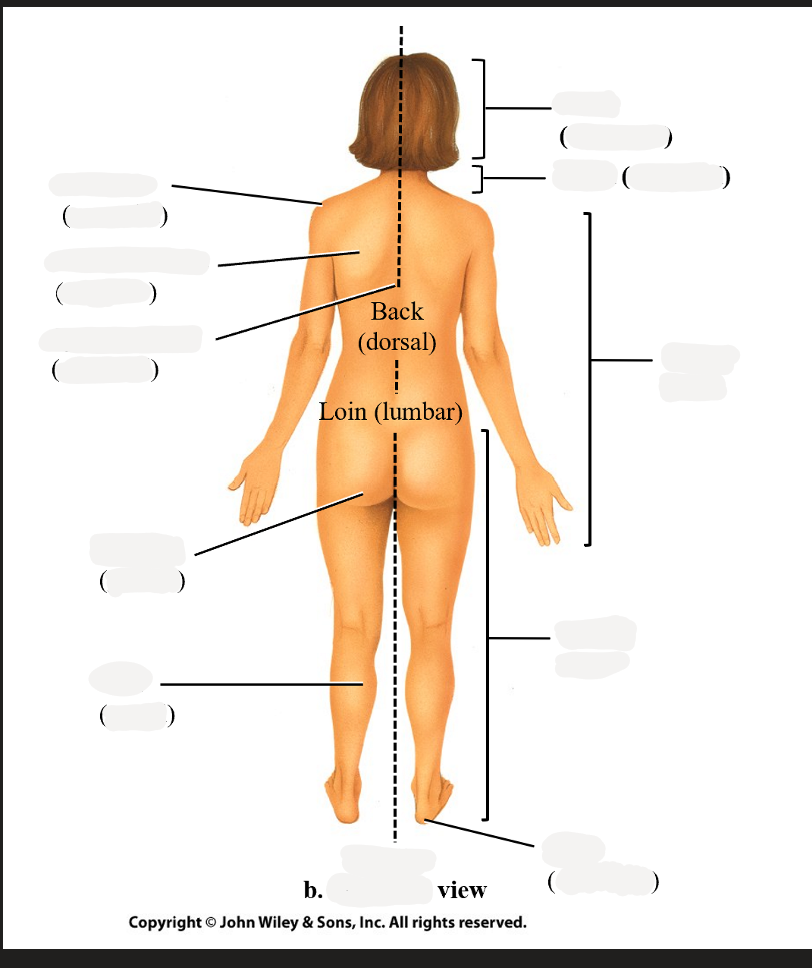
what 2 regions are included in the lower limb?
buttock (gluteal)
calf (crural)
heel (calcaneal)

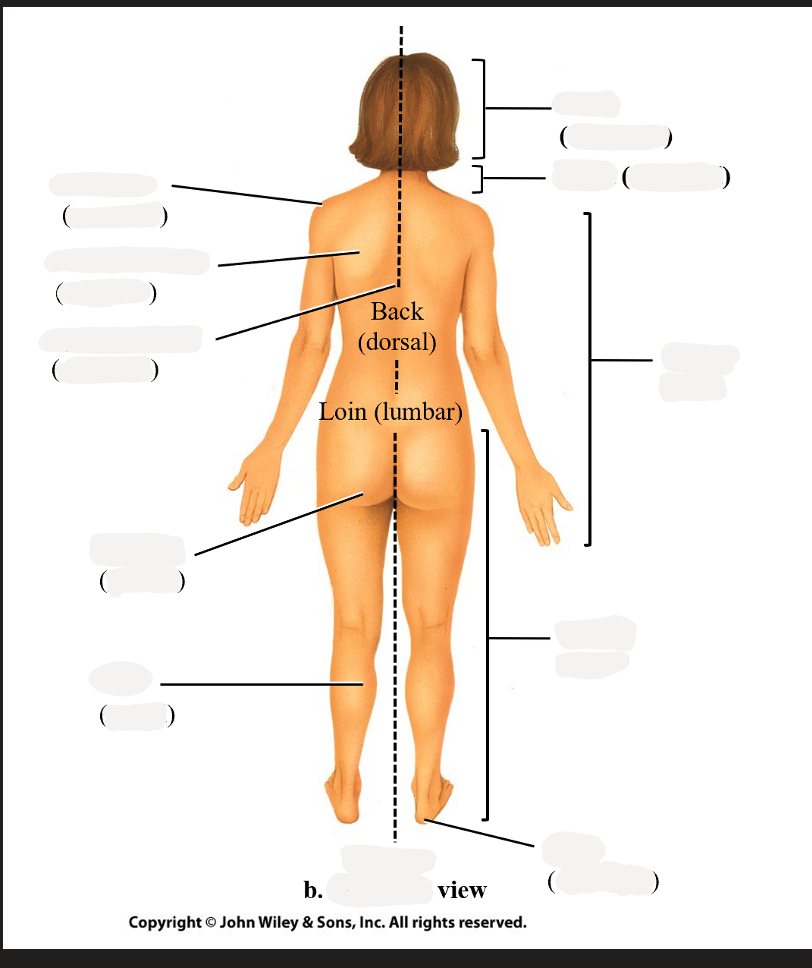
posterior view
back view
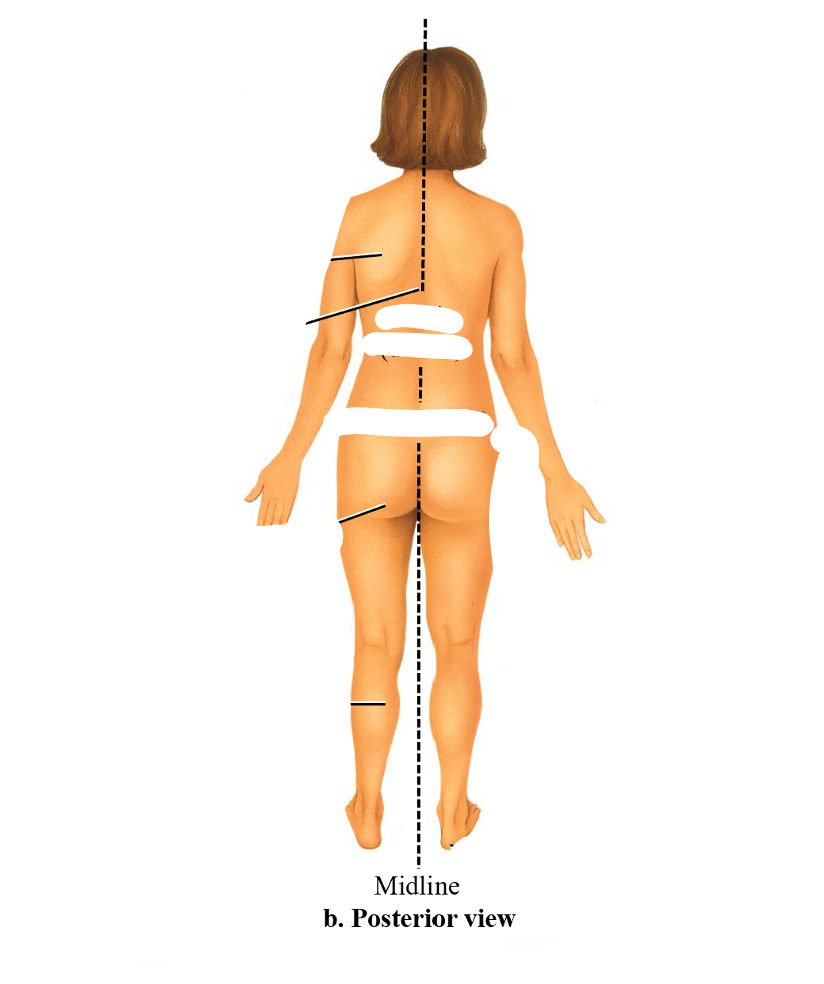
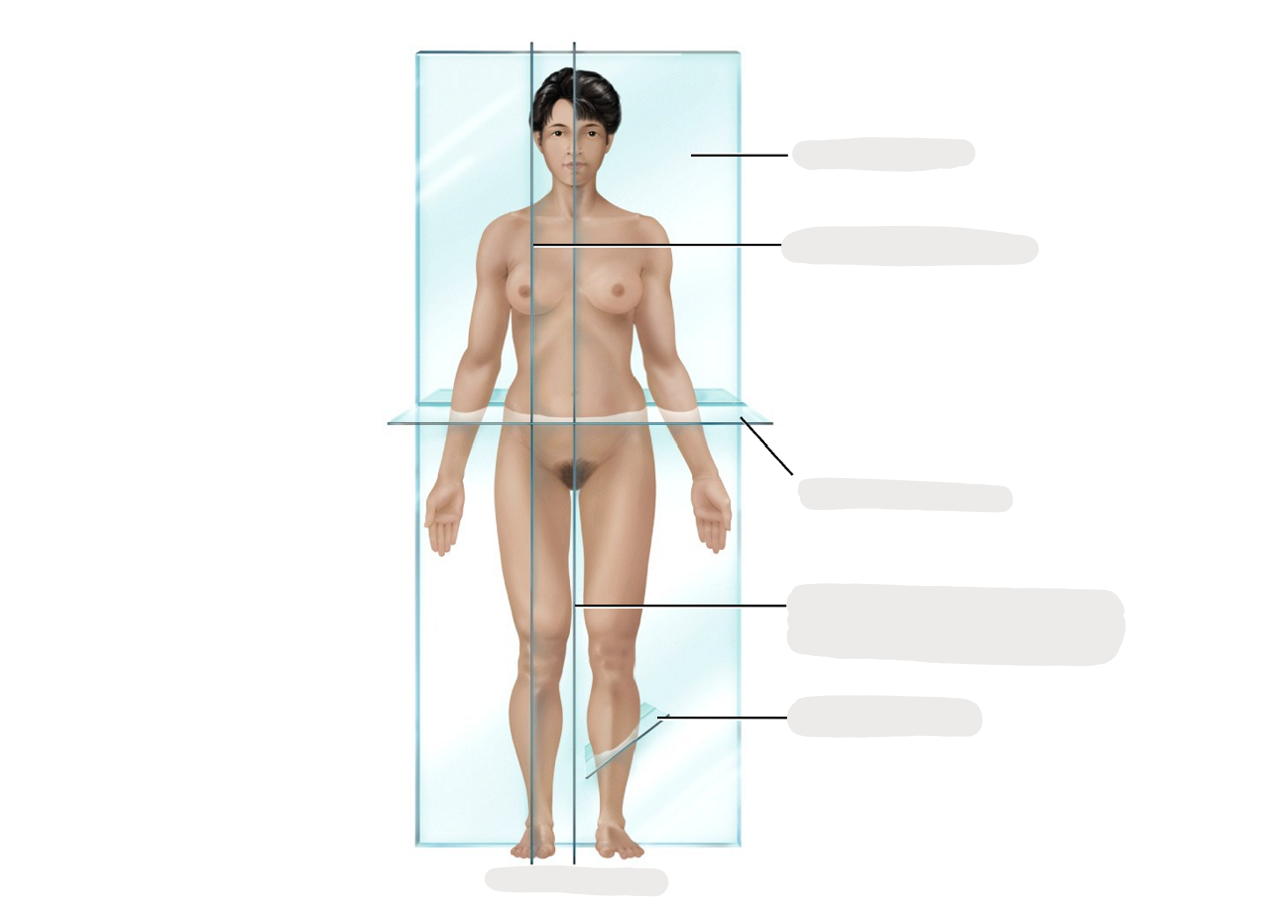
Frontal Plane
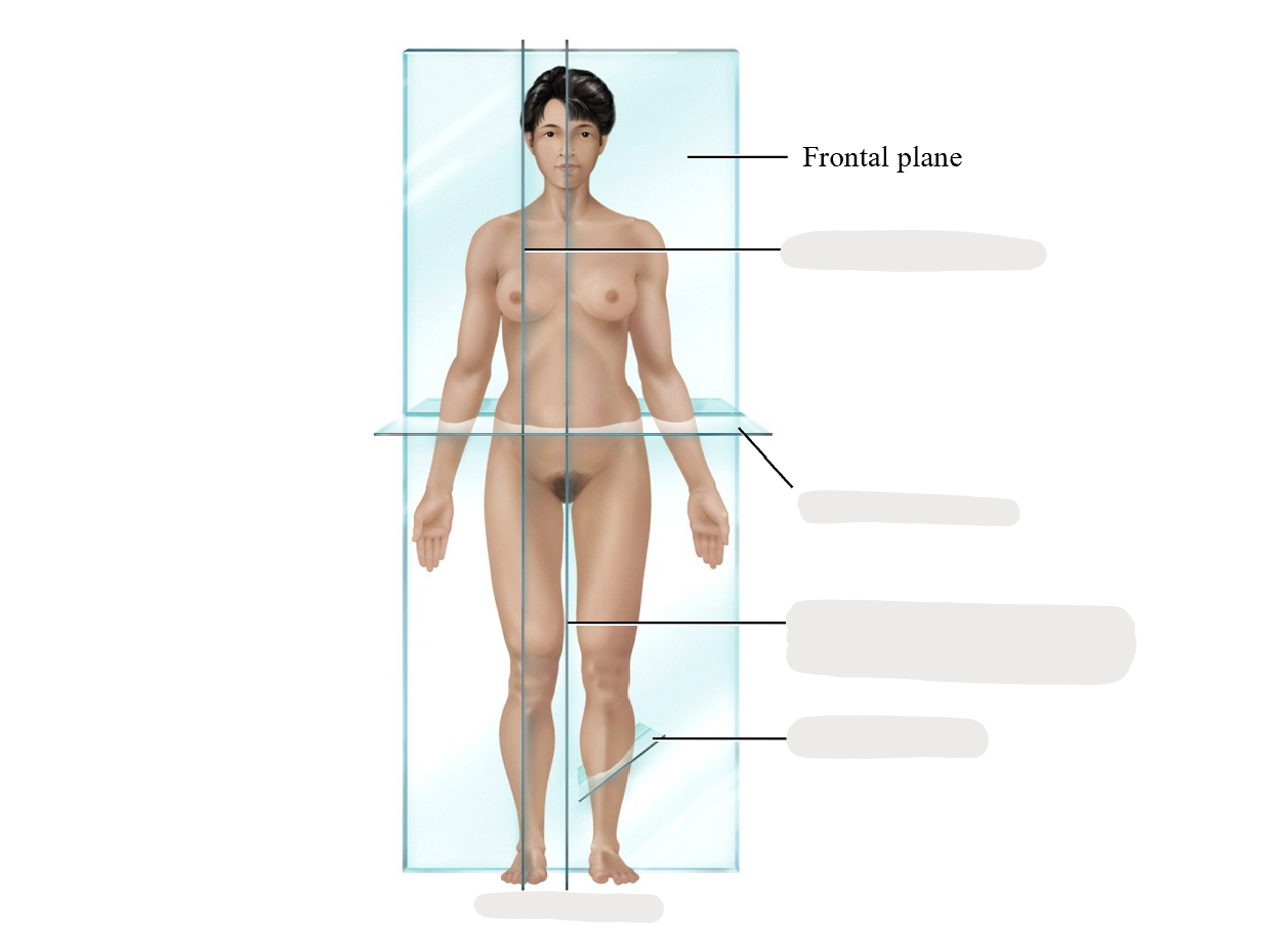
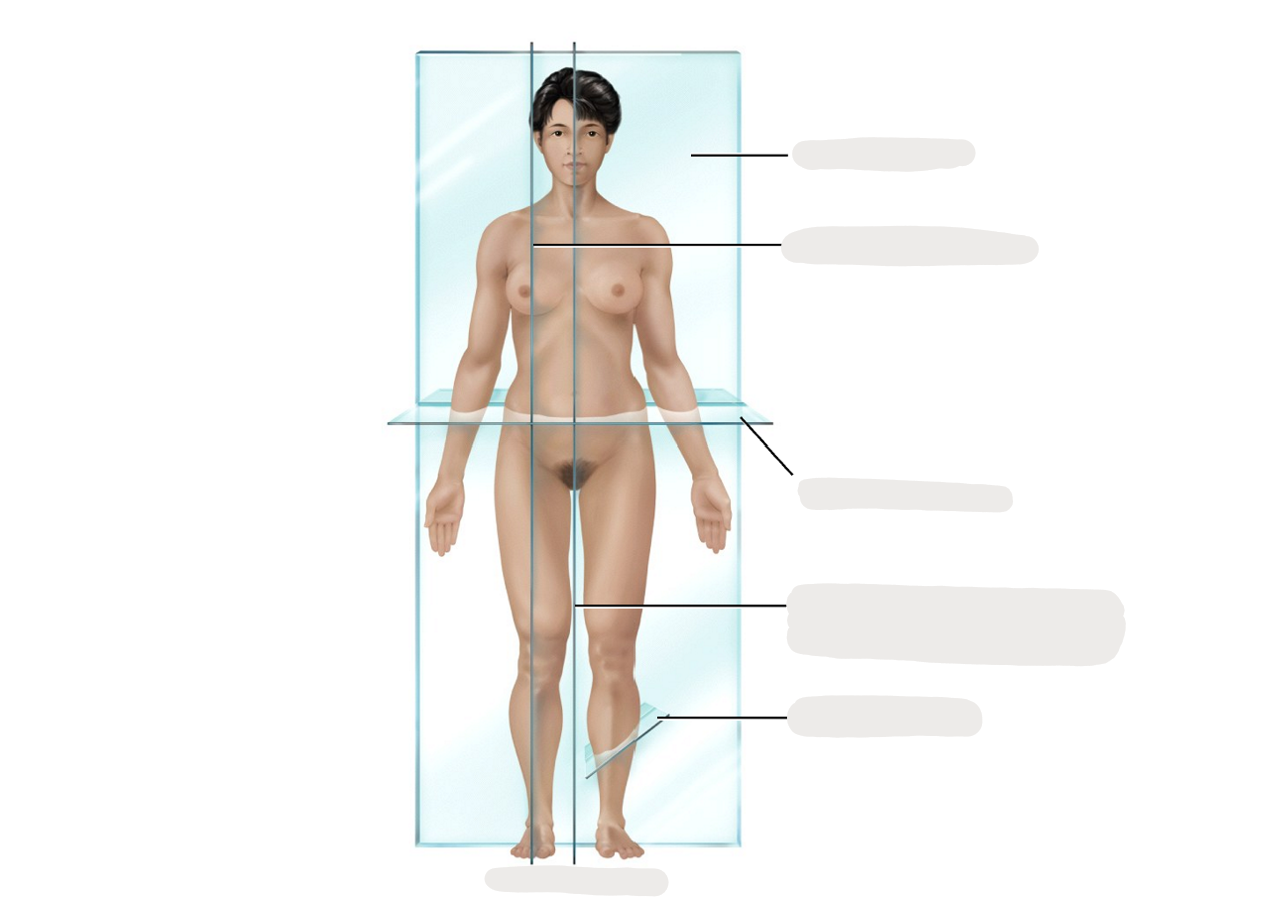
Parasagittal Plane

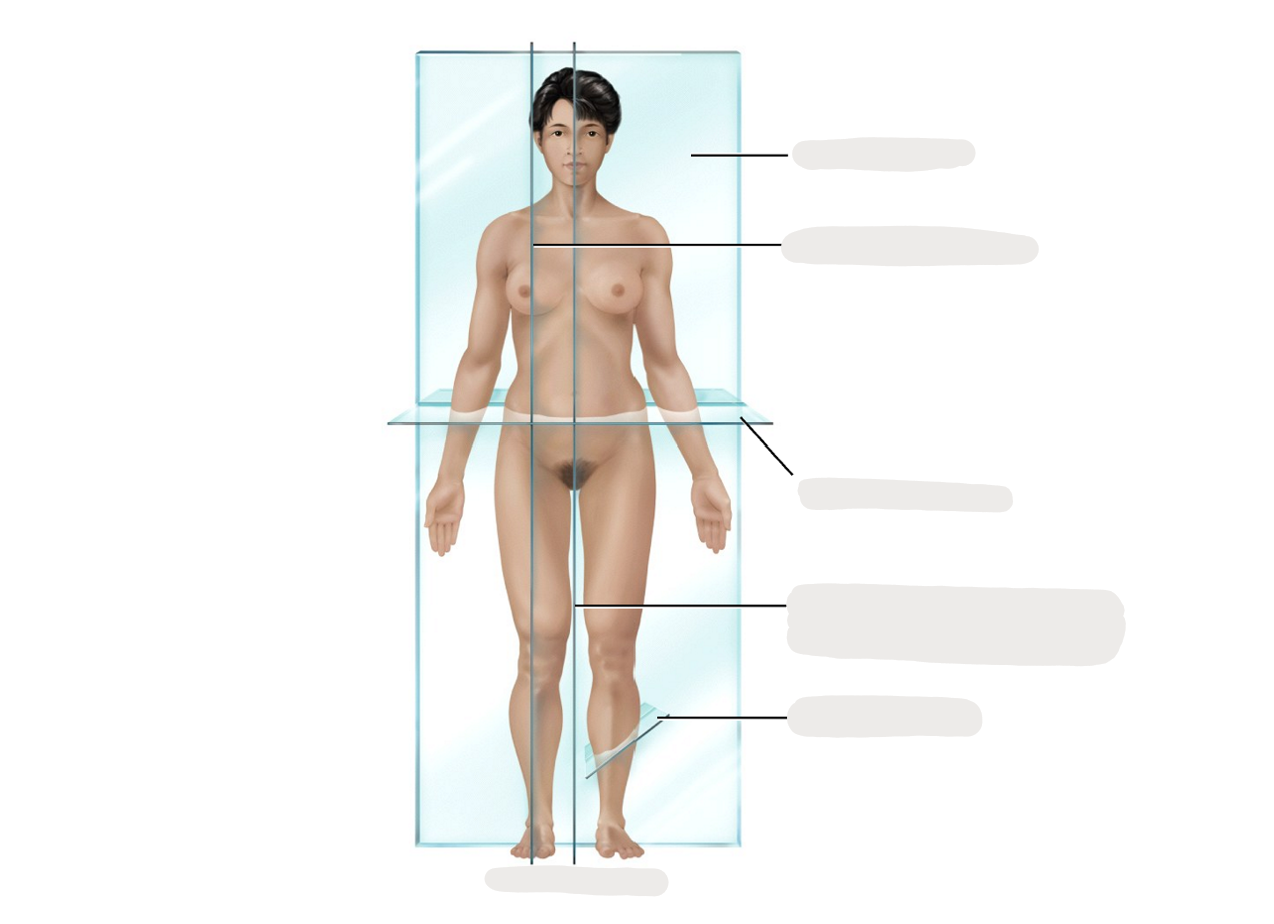
Transverse Plane
think: medical imaging
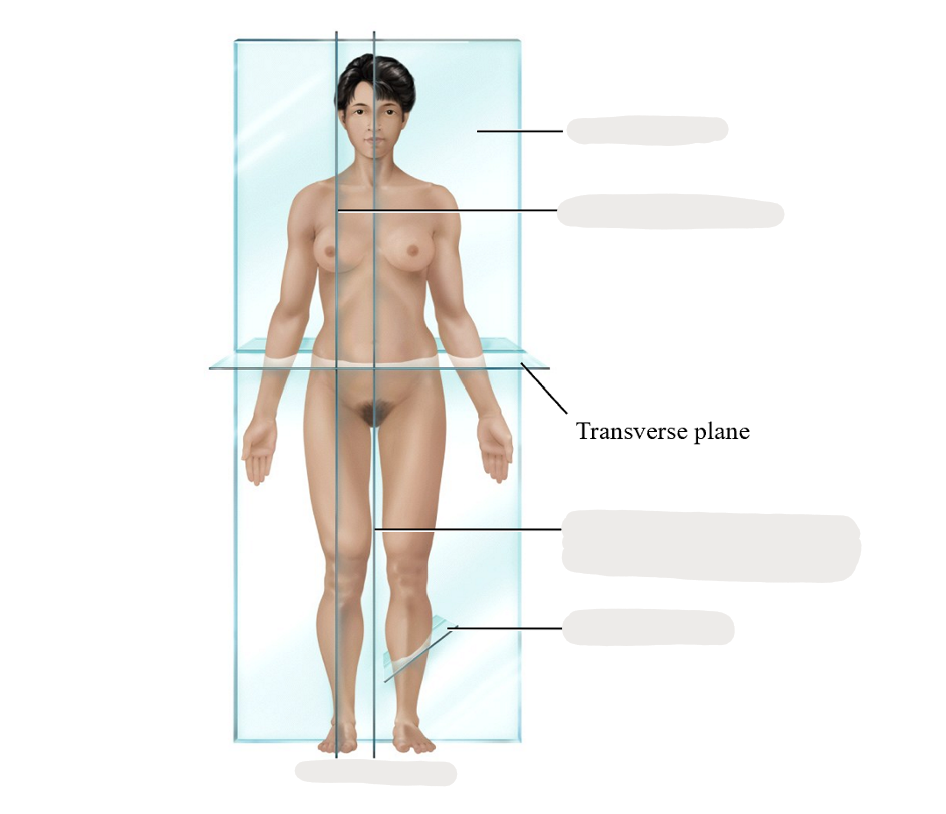
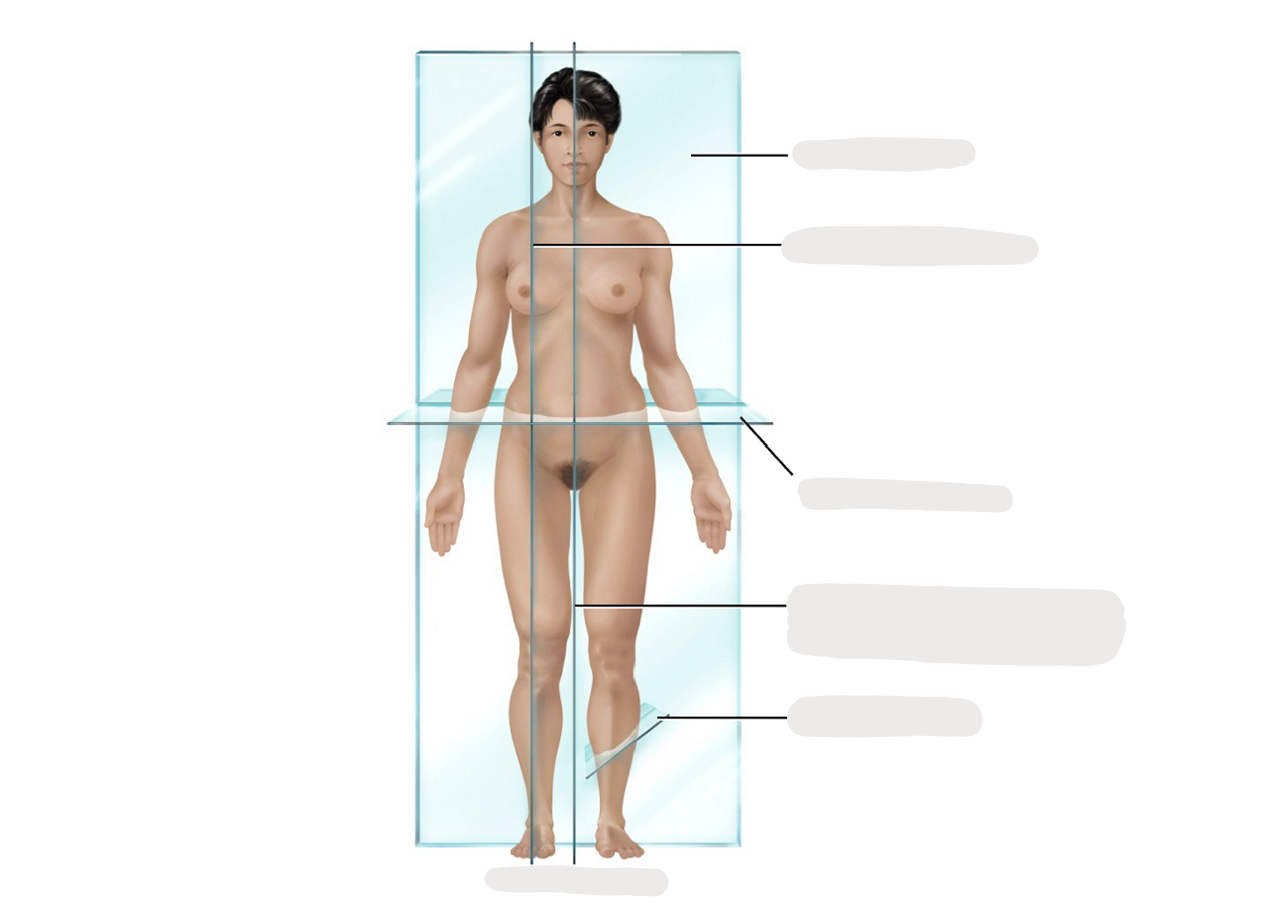
Midsagittal Plane (through midline)
cuts in midline:in half
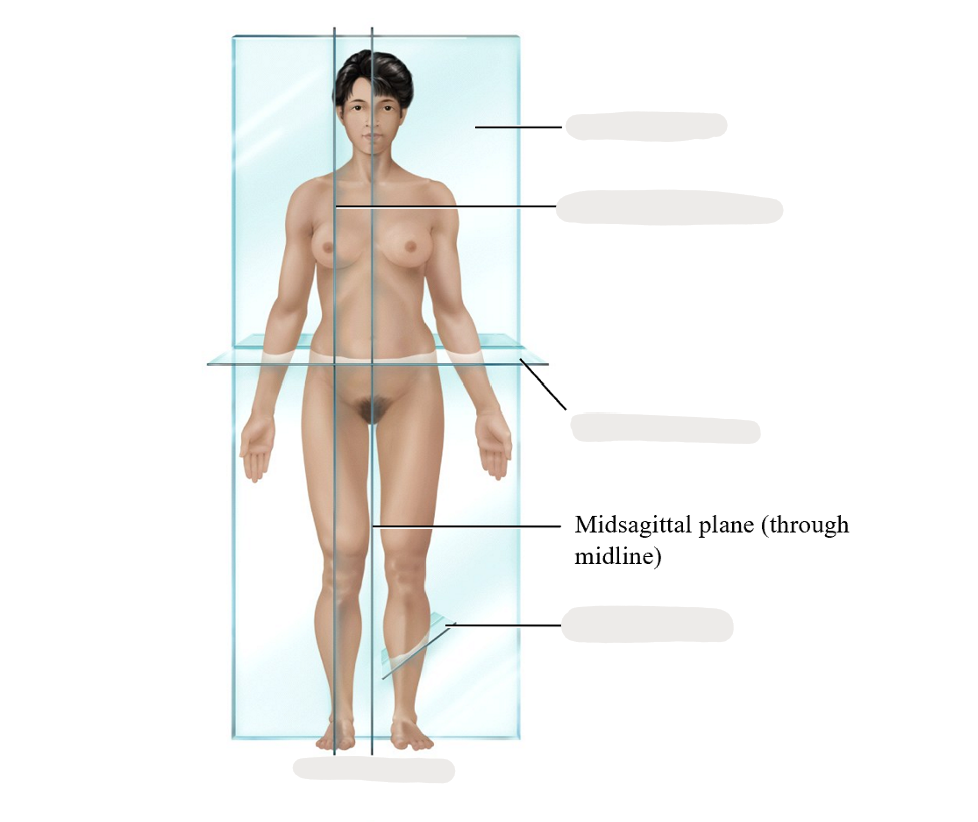
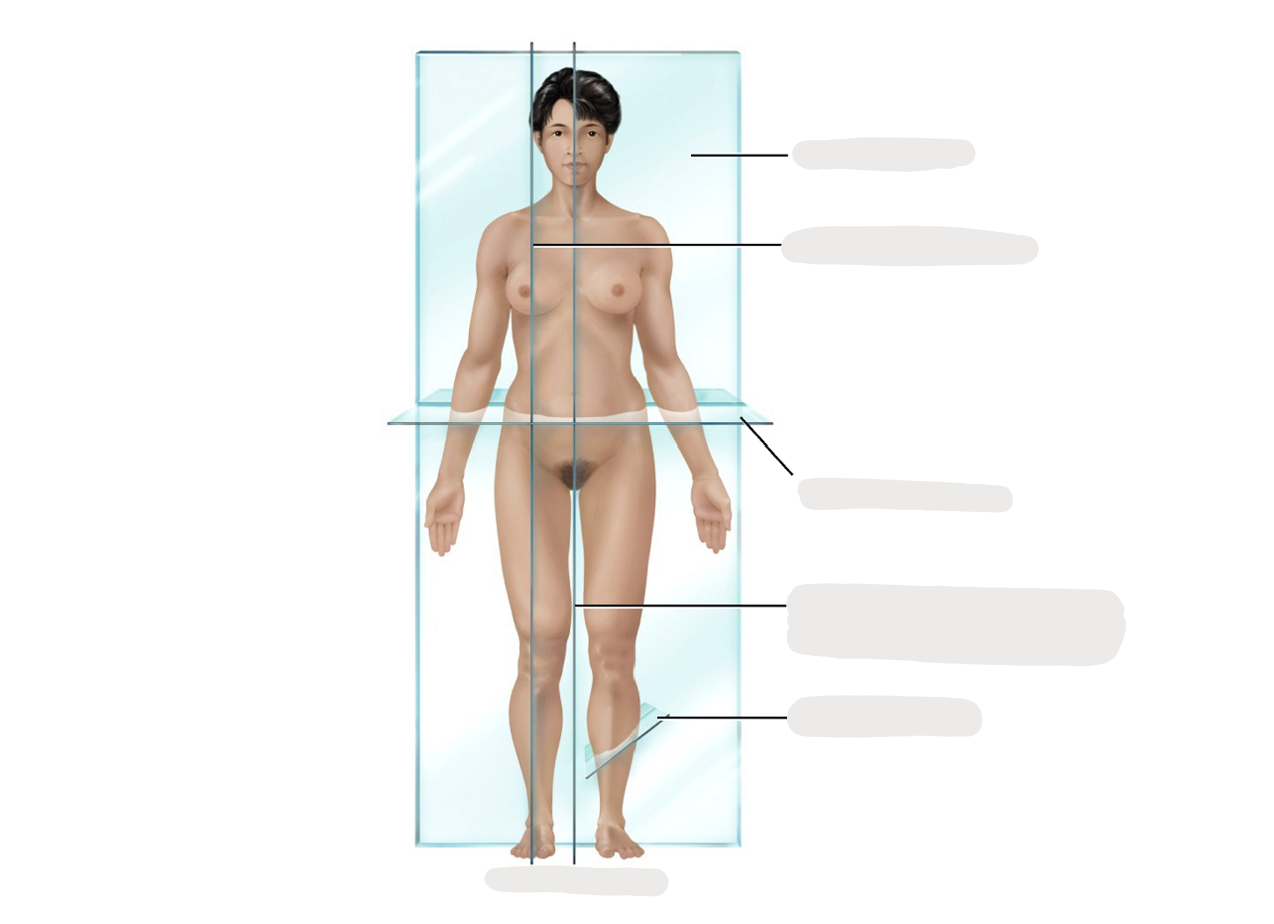
Oblique Plane
unnormal/out of body
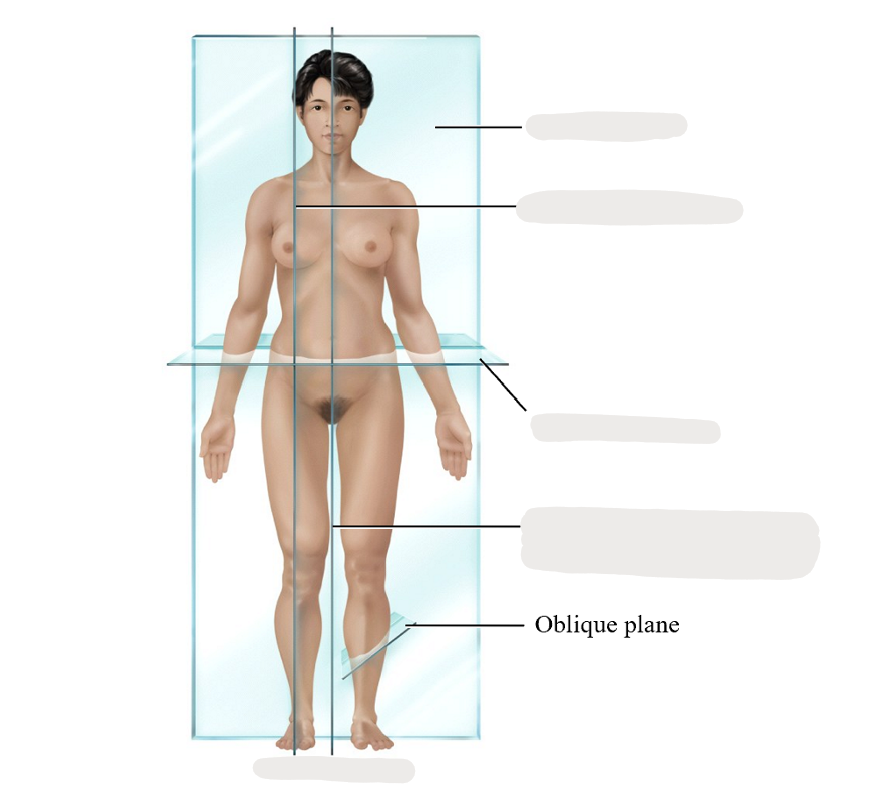
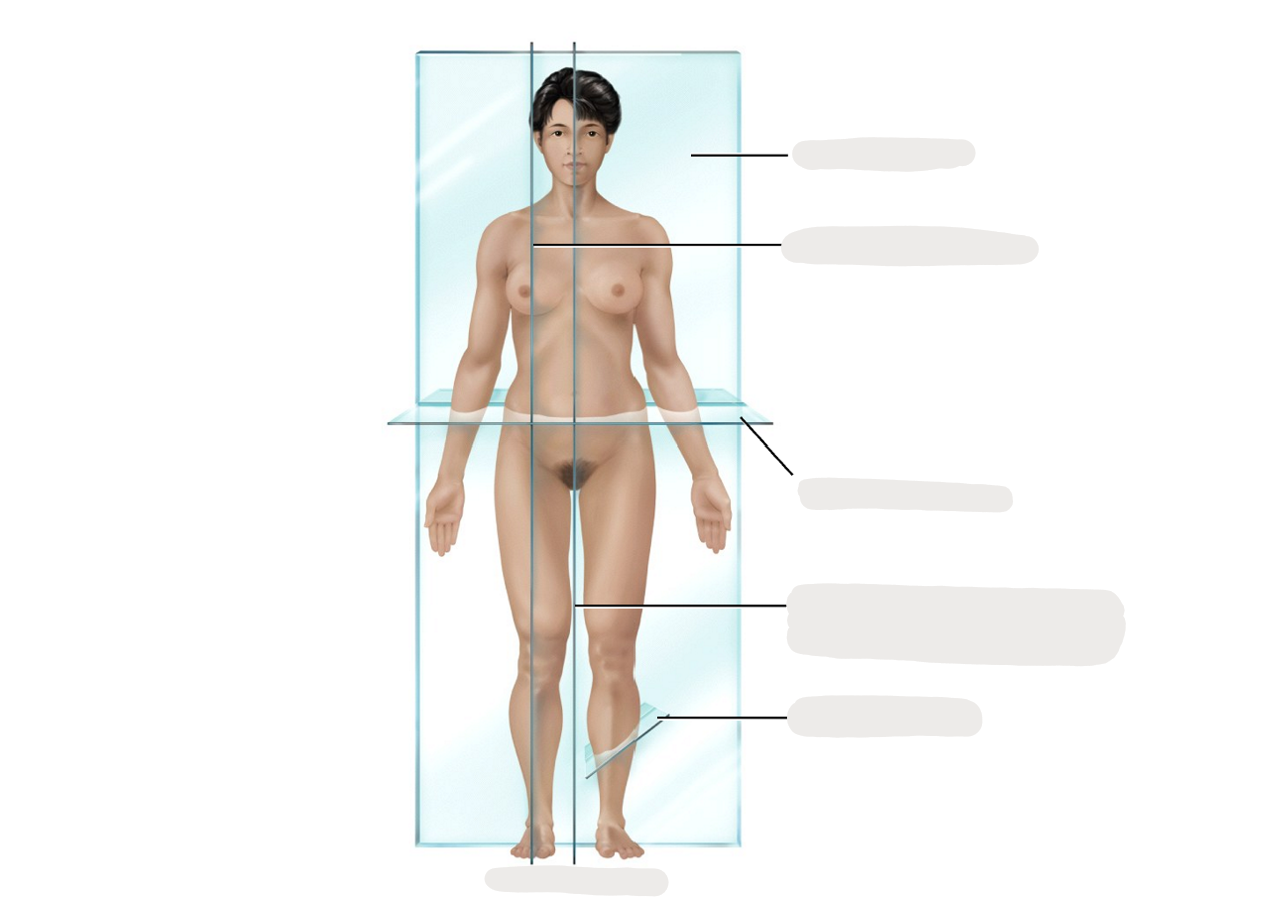
Anterior view
front view
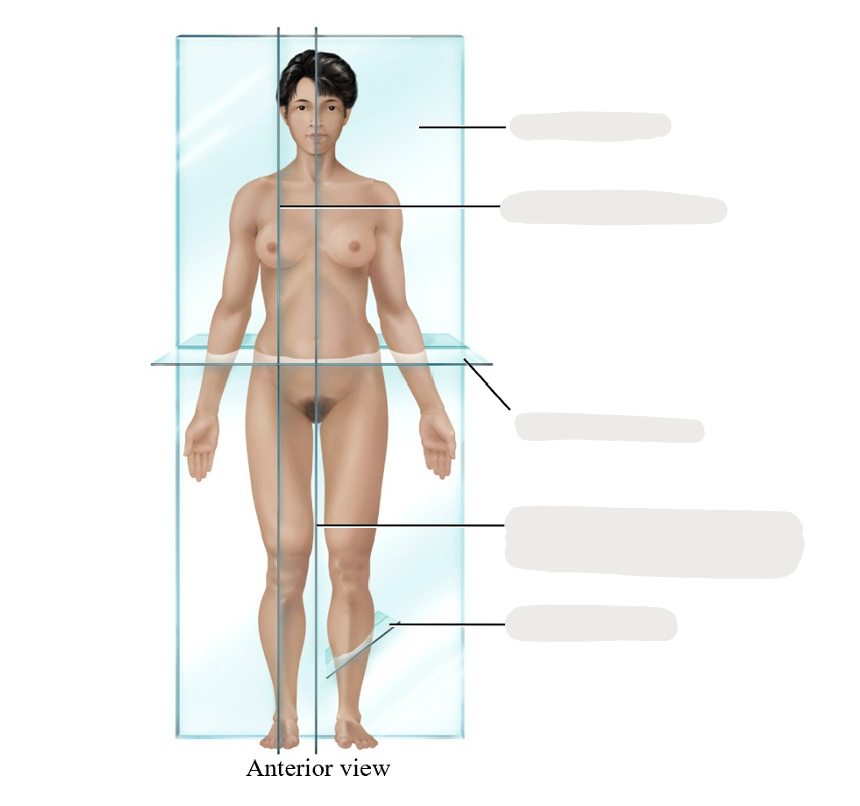
Cross-Sectional Anatomy
This is what an MRI uses, here don’t see organs only planes!
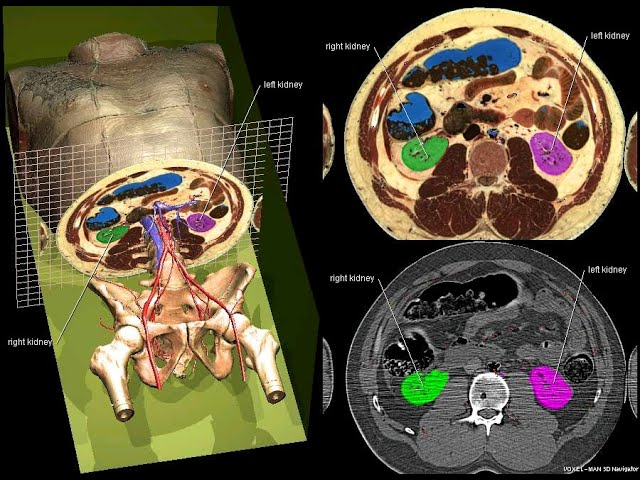
In lab, what is the analogy given for defining a “cavity”?
imagine a pocket, an opening (like a dentist looks for cavities in your mouth)!!!
What is defined as a open hallow region in tooth caused by bacteria
CAVITY!
What are the thoracic and abdominopelvic cavities in the body separated by?
By the layers of cells, a thin membrane, can be seen w/ a microscope!
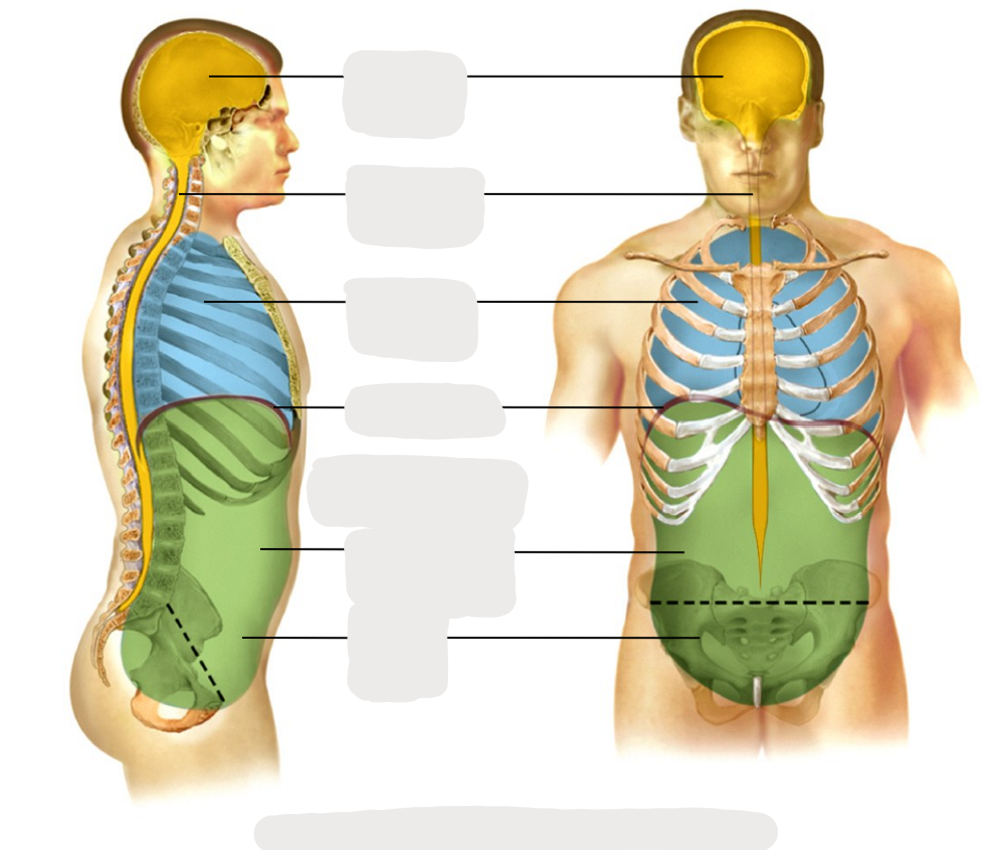
Cranial Cavity
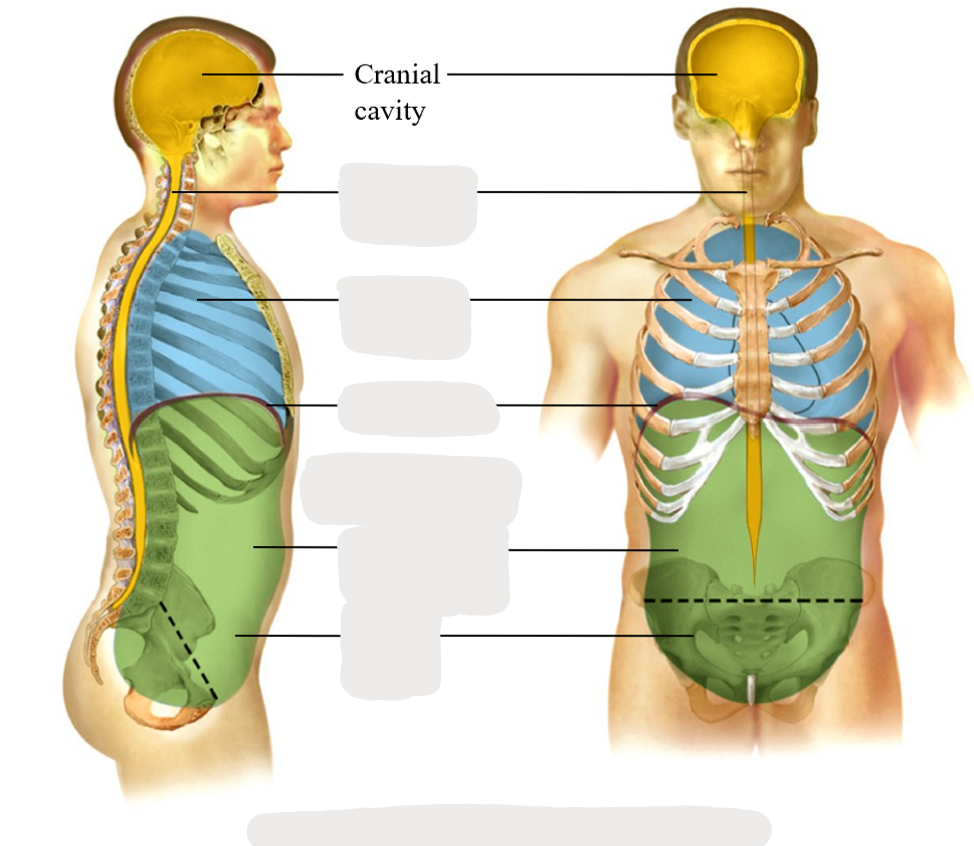
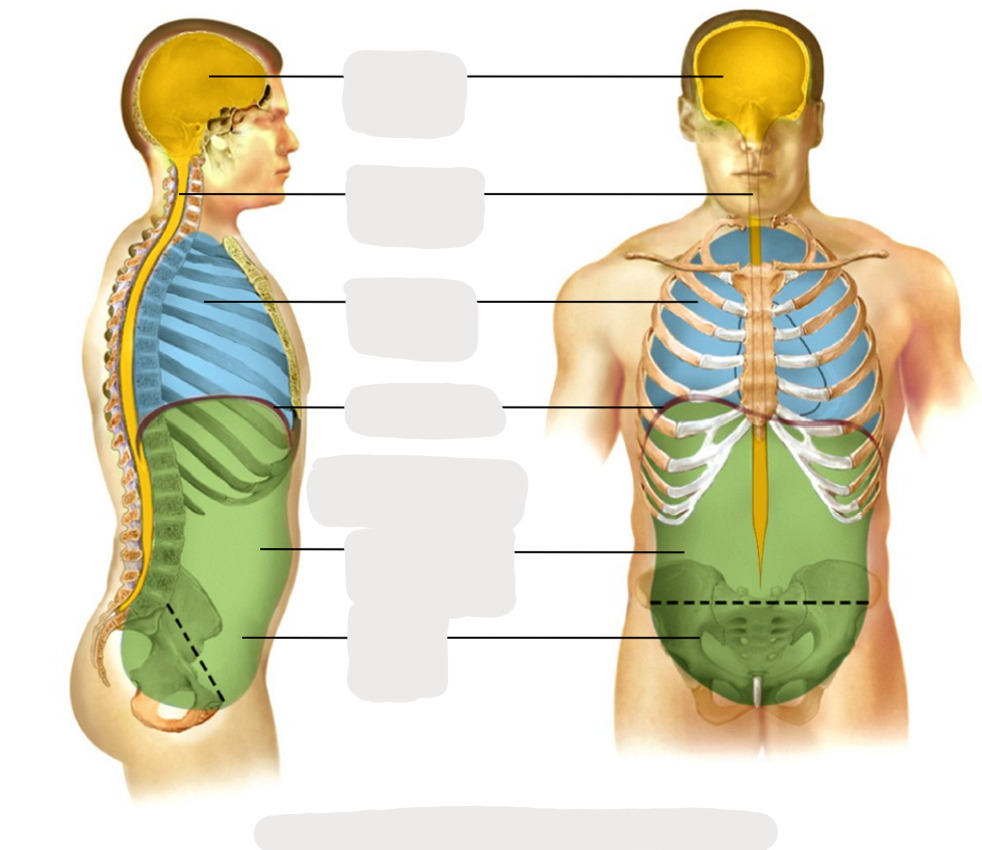
Vertebral Canal
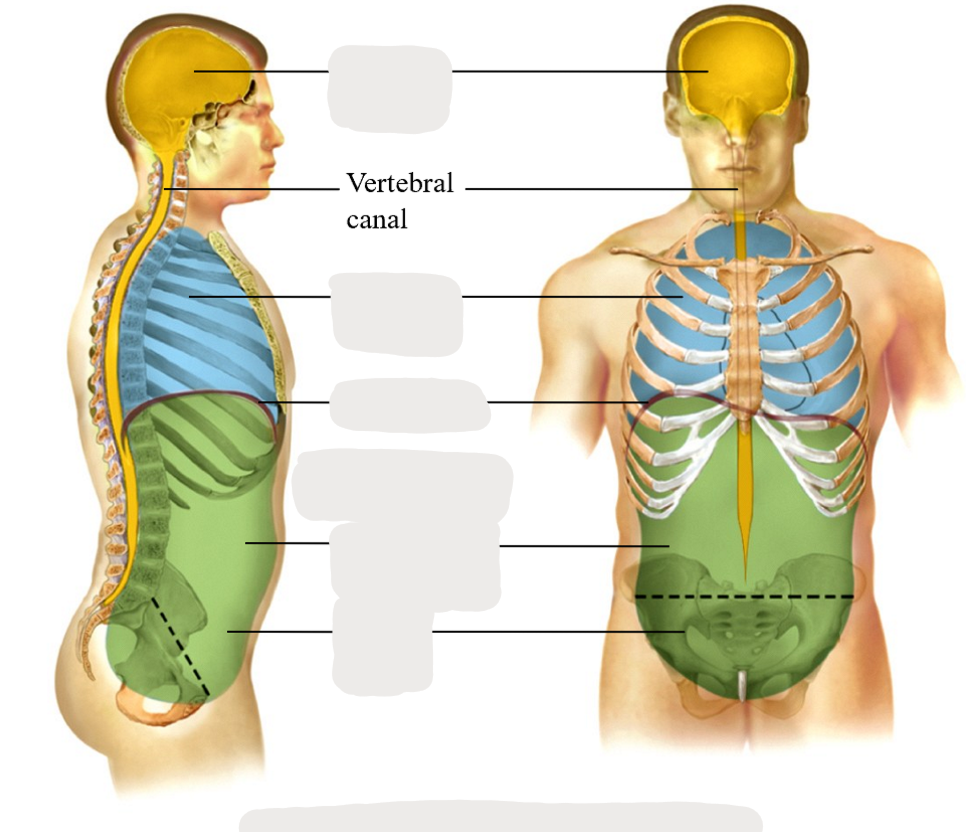
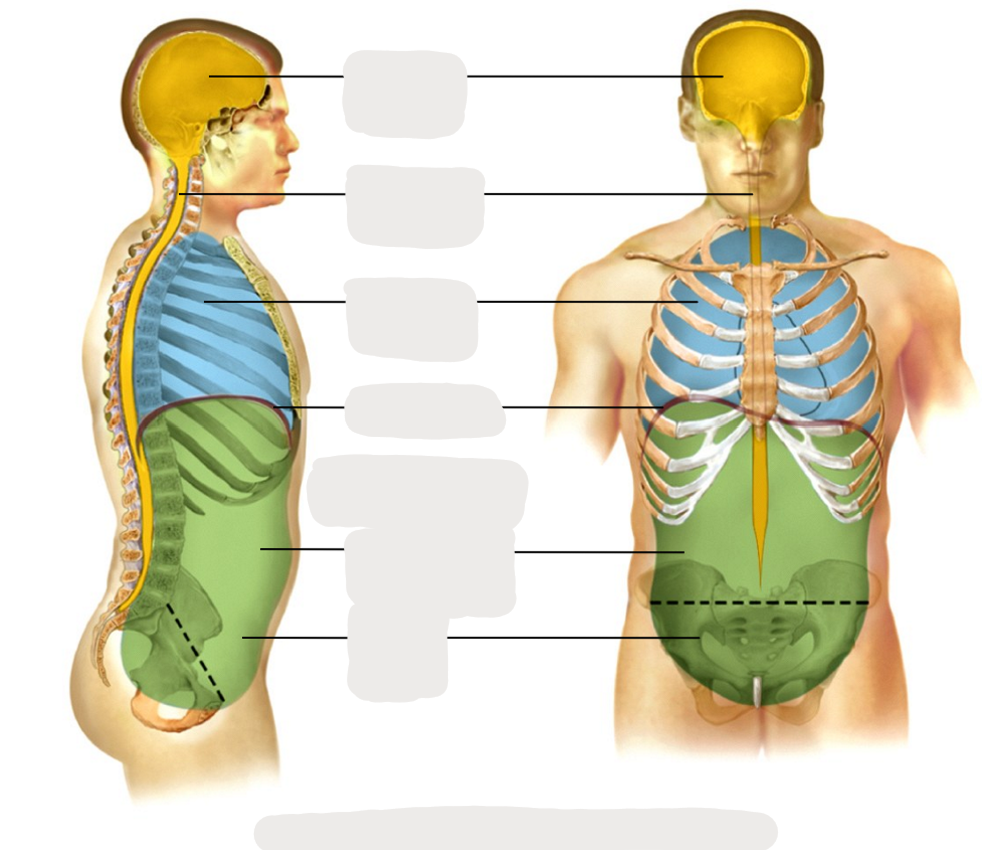
Thoracic Cavity
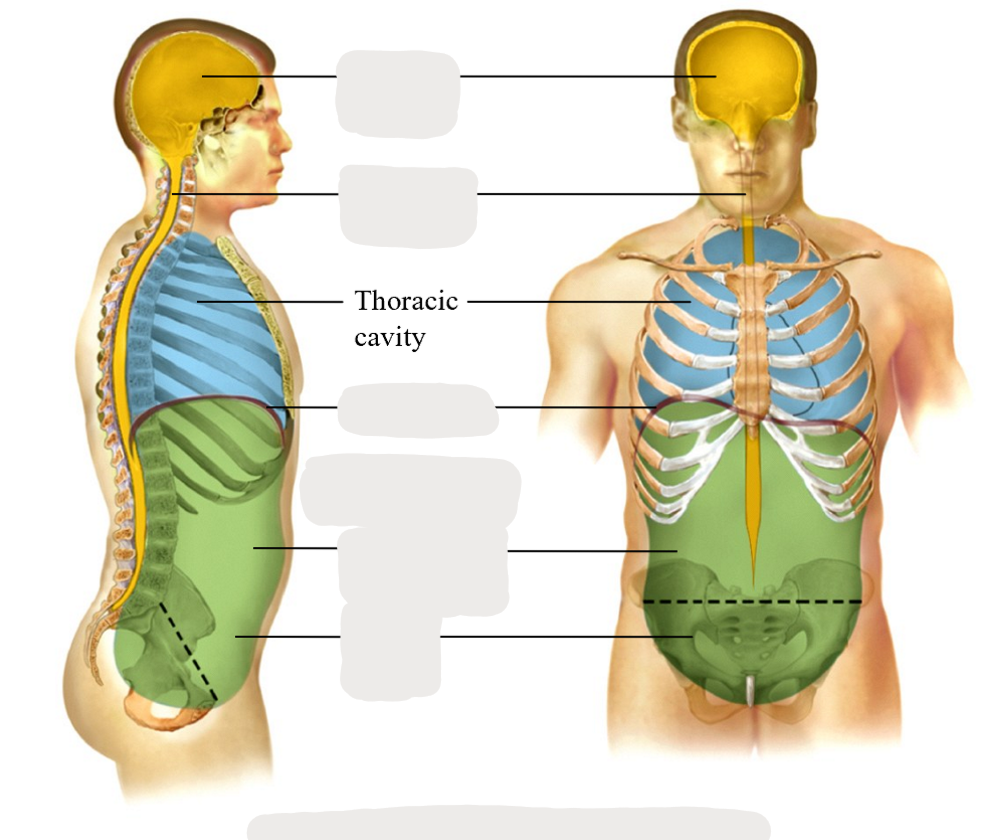
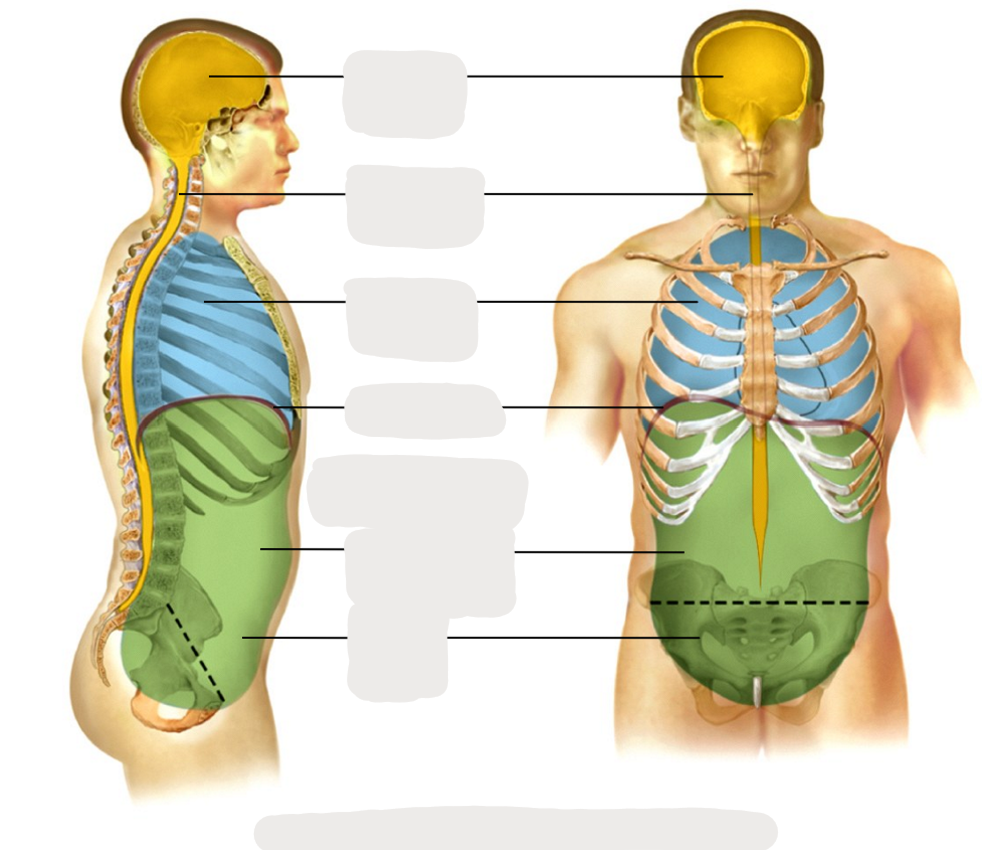
Diaphragm
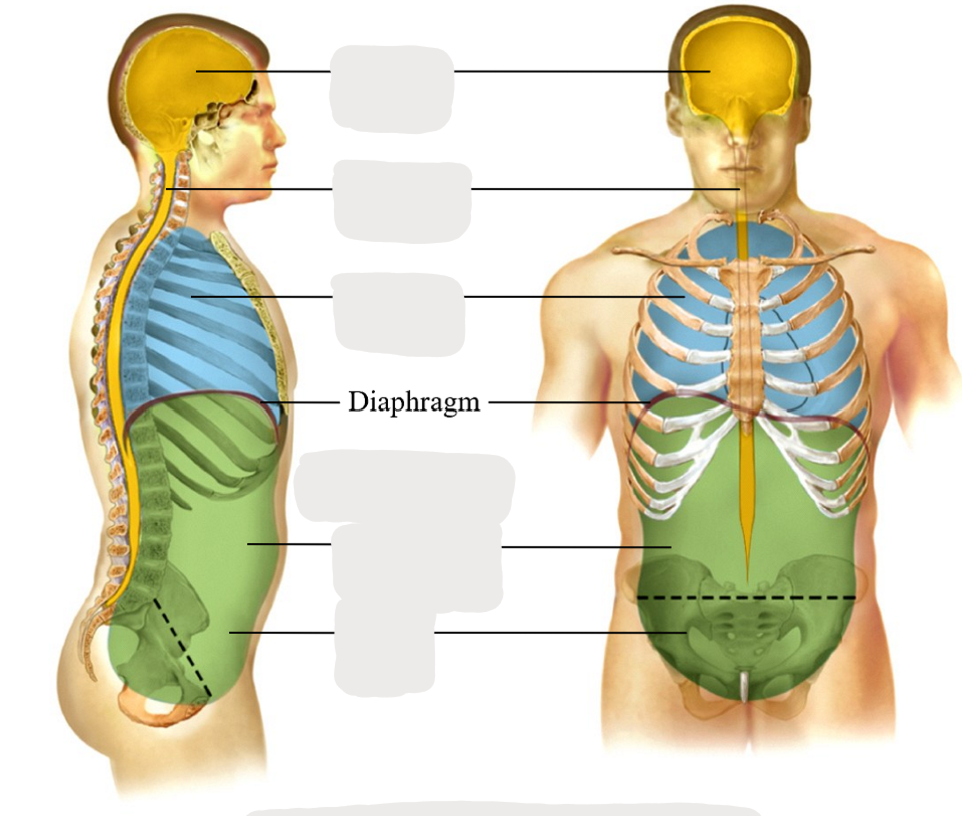
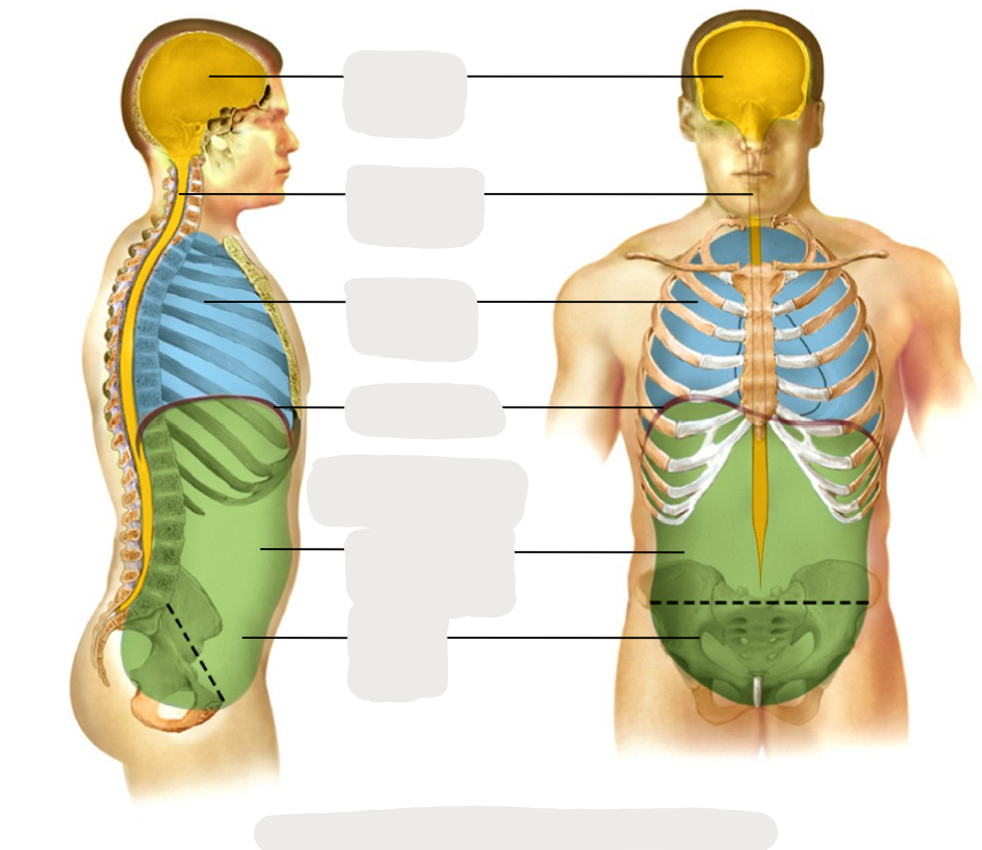
Abdominopelvic Cavity
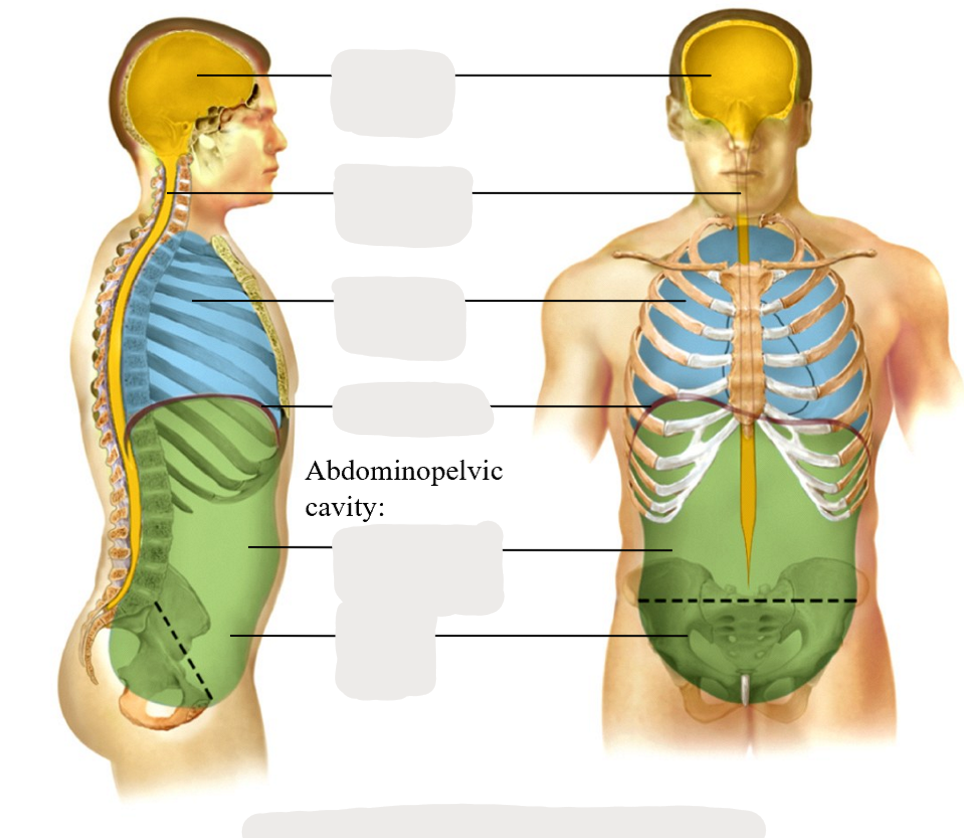

Abdominal Cavity
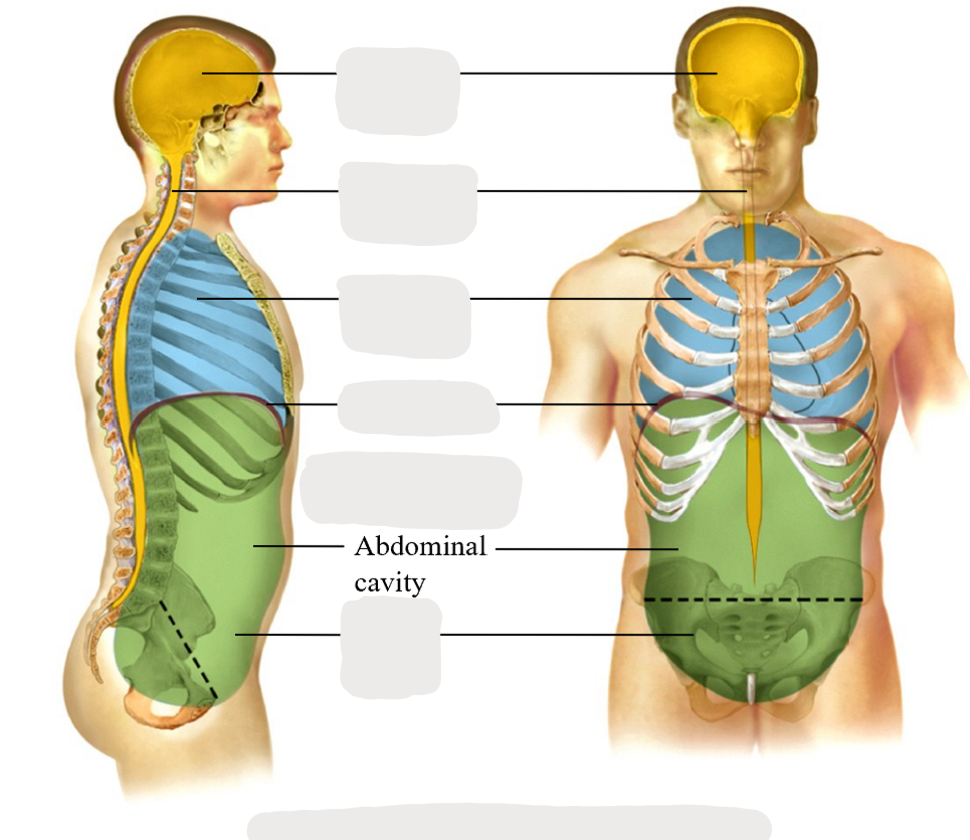
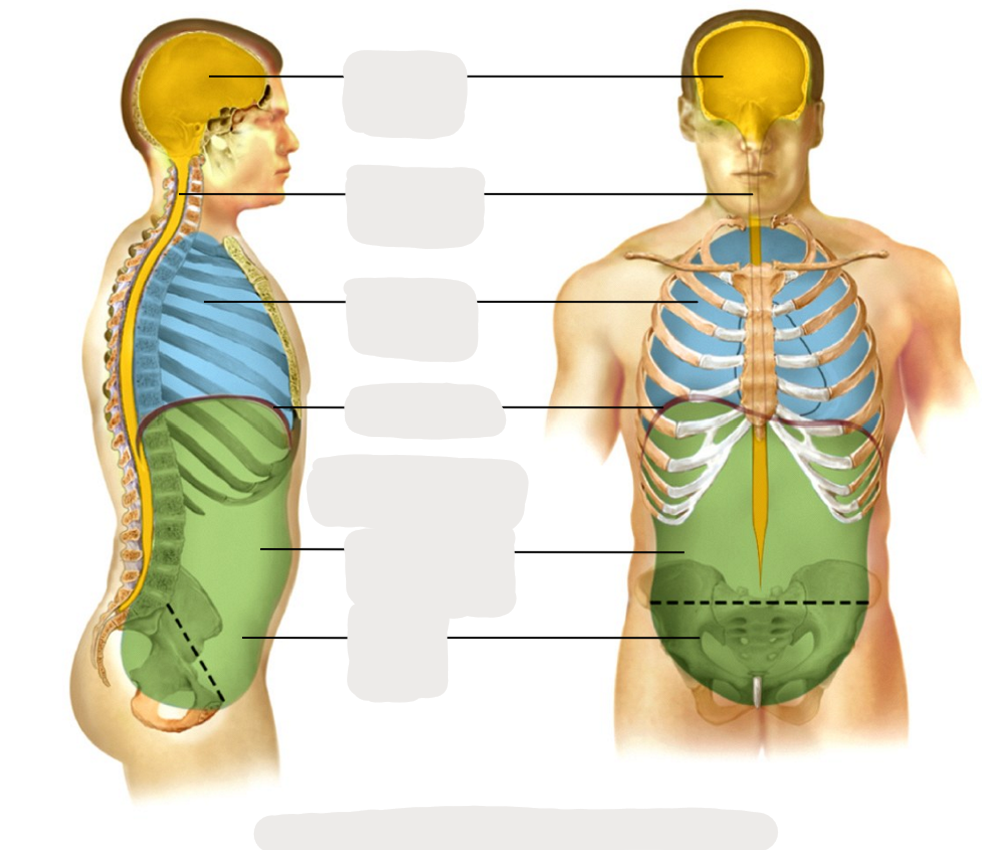
Pelvic Cavity
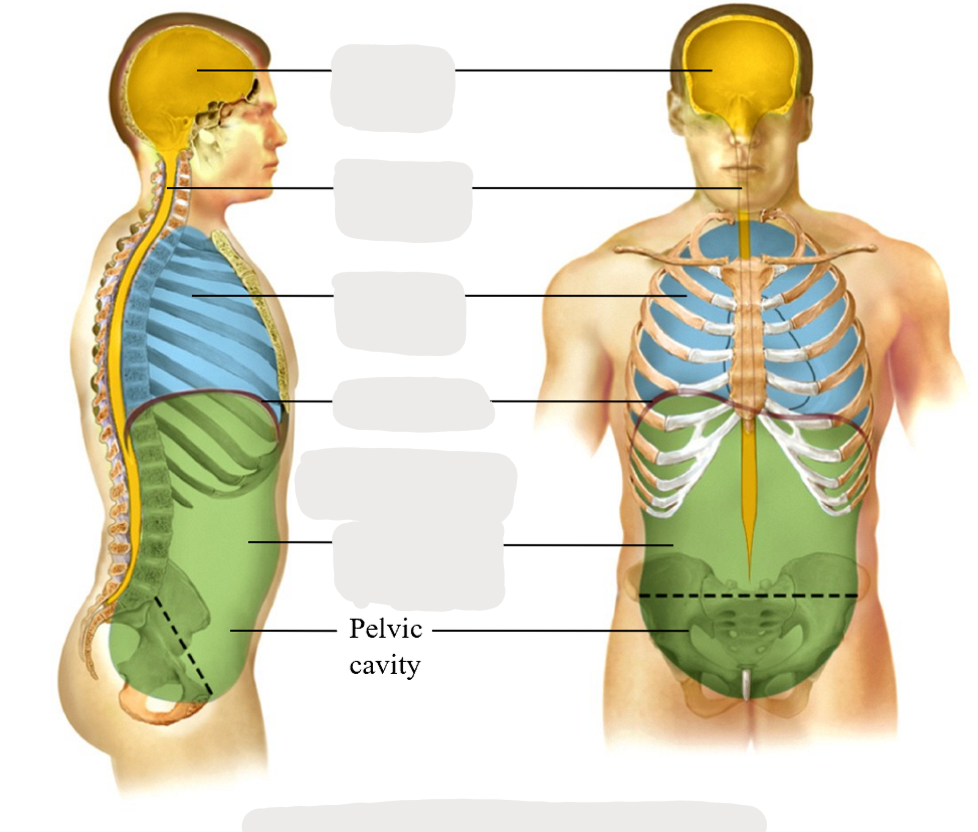

2 views of the major body cavities
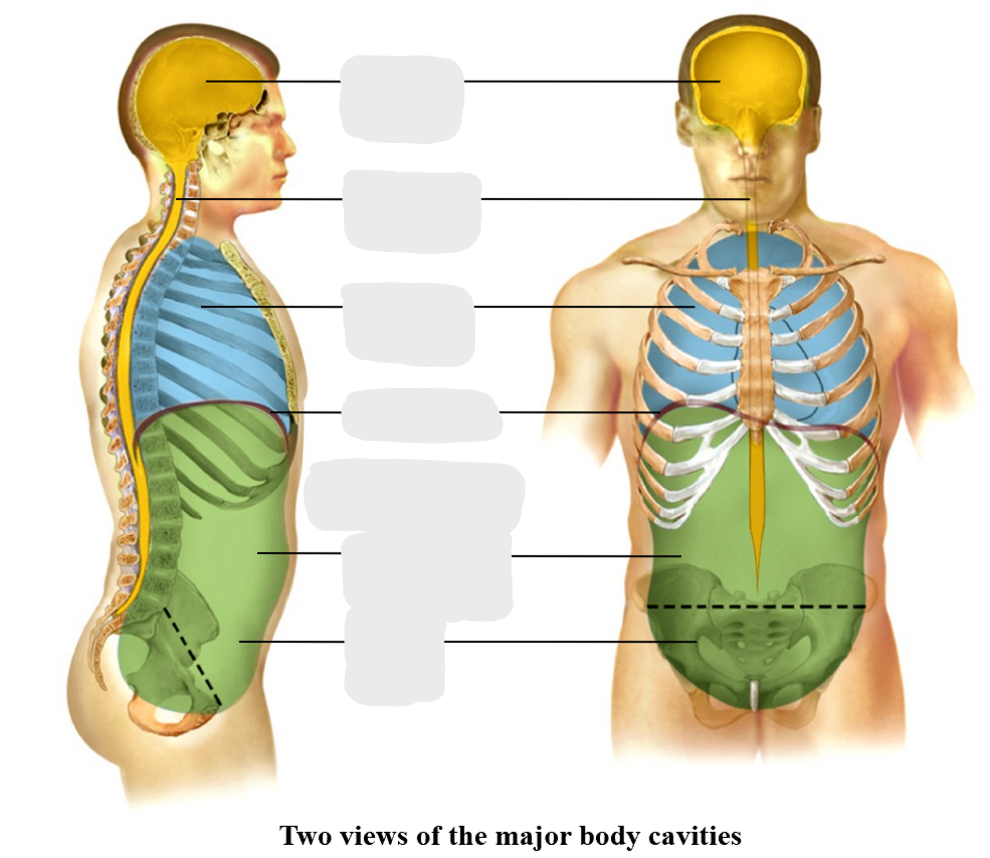
What are the 4 major cavities in the human body?
hint: CVTA!
Cranial Cavity
Vertebral Cavity
Thoracic Cavity
Abdominopelvic Cavity
Which of the 4 major human body cavities is formed by cranial nerves & contains brain?
Cranial Cavity
Which of the 4 major human body cavities is formed by a vertebral column & contains spinal cord & the beginnings of spinal nerves?
Vertebral Cavity
Which of the 4 major human body cavities is also known as the chest cavity; contains pleural & pericardial cavities & mediastinum?
Thoracic Cavity
What 2 cavities and central portion are found within the Thoracic Cavity?
Pleural Cavity
Pericardial Cavity
Mediastinum
Which of the 2 cavities found within the Thoracic Cavity surrounds the lung; the serous membrane of each pleural cavity is the pleura?
Pleural Cavity
Which of the 2 cavities found within the Thoracic Cavity surrounds the heart; the serous membrane of the pericardial cavity is the pericardium?
Pericardial Cavity
This is a central portion within the Thoracic Cavity between the wings; extends from sternum to vertebral column & from neck to diaphragm; contains heart, thymus esophagus, trachea, and several large blood vessels?
Mediastinum
Which of the 4 major human body cavities is subdivide into abdominal & pelvic cavities?
Abdominopelvic Cavity
What 2 cavities are found within the Abdominopelvic Cavity?
Abdominal Cavity
Pelvic Cavity
Which of the 2 cavities found within the Abdominopelvic Cavity contains stomach, liver, gallbladder, small intestine, & most of the large intestine, where it’s serous membrane is the peritoneum?
Abdominal Cavity
Which of the 2 cavities found within the Abdominopelvic Cavity contains the urinary bladder, portions of large intestine, & internal organs of reproduction?
Pelvic Cavity
How do we distinguish between body cavities?
A. Presence of specific organs in the cavity.
B. Membranes surrounding in the body.
C. Generalized regions in the body.
D. Surrounding muscle groups.
B. Membranes surrounding the cavity.
The trunk is composed of what 3 regions?
A. Thoracic, Abdominal, and Pelvic
B. Chest, Lumbar, Pubic
C. Sternal, Lumbar, Pelvic
D. Thoracic, Interstitial, Pelvic
A. Thoracic, Abdominal, and Pelvic